Altoona Works-World’s Largest Railroad Maintenance Facility
In the mid-1800s, the Pennsylvania Railroad’s primary focus was on expansion westward. At this time, the railroad tackled the steep Allegheny Mountains via the Allegheny Portage Railroad, and was in the process of building the Horseshoe Curve to create their own main line route through the mountains.
Due to this rapid expansion, the Pennsylvania Railroad required a maintenance facility in close proximity to the Allegheny passage. Altoona was chosen, as its location at the foot of the Alleghenies was ideal for trains traveling in either direction along the PRR Mountain Division. Planning and construction of the Altoona Works began in 1850, and upon completion, the shops began assembling locomotive and rolling stock parts, such as boiler plates, oil mixtures, and springs. Additionally, the shops produced metal castings for infrastructure such as bridges and wrought iron rails.
The Pennsylvania Railroad built the town of Altoona, providing its workers with affordable housing, as well as housing for railroad executives. The railroad offered many amenities within the town such as sports leagues, golf courses, restaurants, schools and libraries. The railroad even provided emergency services, such as a fire department.


Planning and Construction
In 1849, with the Pennsylvania Railroad’s rapid westward expansion, additional repair and maintenance facilities were needed. The first facilities to be constructed in Altoona was the engine house, where locomotives were stored until servicing, the erecting shops, which built new locomotives to PRR standards, and the machine shop, where various castings were produced for locomotives, rolling stock, and bridge girders. When Horseshoe Curve was completed in 1854, the railroad began expanding towards Pittsburgh, and erecting several maintenance and repair facilities along the route. Lacking foundry facilities, Altoona produced metal castings for the other shops throughout the system.
With the success and expansion of the Altoona Works, the town grew in substantial numbers, as many settlers arrived from Europe. Just before the Civil War, Altoona Works employed over one-thousand workers, and was the leading repair and maintenance facility on the system.
During the Civil War, the railroad grew tremendously. It acted efficiently and was reliable in transporting troops and other goods related to the war effort. This led to the Altoona facility to expand in order to accommodate the increase in work. The PRR purchased additional land and built the Altoona Car Shops, which facilitated construction and repair of various types of railcars. Additionally, various shops such as blacksmith and foundry shops were erected to deal with the increase of traffic, primarily on the eastward stretch of railroad.
During this time of rapid expansion, the invention of the telephone by Alexander Graham Bell prompted the Altoona Works to adopt the new technology. Bell’s associates were sent to the shops to explore the feasibility of implementing telephone lines within the facilities, to allow for the various shops to communicate with one another. This further exemplified the Altoona Works as the leader in state-of-the-art manufacturing technology within the railroad industry and beyond.

Further Expansion
During 1886, the Altoona shops reached their maximum capacity for production, therefore, the construction of the Juniata Shops began. Located in the Juniata section of Altoona, the shops contained facilities such as blacksmith shops, boiler shops, paint shops, machine shops, and various other facilities. The Juniata Shops were scheduled to produce 150 locomotives annually, and produced over 100,000 wheels and other running gear in the foundry.
Perhaps the most important facility within the shops was the testing facility. This facility led the nation’s railroad industry with their advanced research and engineering practices. Additionally, the PRR conducted experiments with substances such as oil, to determine which substances allowed locomotives to operate the most efficiently. This led the shops to share their findings with the railroad industry by publishing their findings in various scientific journals. This helped establish the Altoona Works as the leader of innovation in the industry, and improved the manner in which railroads maintained their locomotives and rolling stock.
Making Strides into the 20th Century
Increasing workloads prompted the shops to expand once again with the addition of another blacksmith shop and the expansion of the existing facilities. The shops became one of the leading producers of iron castings throughout the rail network, and purchased more land for an additional foundry complex. This new complex had the ability to construct 900 wheels daily, and was the largest facility of its kind in the United States. The foundry shops served many years of service, however, in the late 1800s, iron wheel sets began to be phased out by the stronger and more reliable steel wheel. As a result, the foundry was converted to other uses such as storage facilities.
In the early 1900s, railroads began switching from passenger cars of wooden construction to steel, citing that they were much more durable and safer in the event of a derailment. This prompted further expansion of the Juniata Shops, and construction began on a facility constructing steel passenger cars.
Although the shops were expanding exponentially throughout the early twentieth century, progress was brought to a halt in the United States’ involvement in World War I. Throughout the war, many shop workers entered the service, resulting in a drastic decline of experienced employees. Additionally, railroad usage increased during the war transporting troops, military vehicles and ammunition. This increase in rail traffic and decrease in workers prompted the government to take control of the nationwide rail system until the end of the war.

In the early twenties, the Juniata Shops were vastly expanded. Machine and erecting shops were constructed consisting of an engine house of fifty stalls, where locomotives could be repaired and serviced. Additionally, the shops made upgrades such as implementing heavy duty cranes, which reduced the cost of labor drastically, as well as increased efficiency. Today, these additions serve as the Juniata Locomotive Shops (JBS), presently under control of Norfolk Southern.
The twenties were a great time of expansion and progress at the shops. During this time, the shops employed 5,500 workers, built twelve locomotives per month, and repaired four locomotives daily. Additionally, the shops built in excess of one-thousand cast iron wheels daily, made possible with a team of over 700 people.
During the Great Depression, the Altoona Works were met with much growth and consolidation. To cut operating costs during this trying time, the shops consolidated many facilities, a move that required less workers and decreased overhead within the shops. Managers at the shops sought to replace workers with machines, especially in the shops that produced metal pins, studs, valves, and sleeves. During this time, many facilities in the Altoona machine shops were transferred to the Juniata Shops area, which left many building in the Altoona Works area empty. However, even after this consolidation, the Altoona machine shops continued to serve an important purpose, as they continued to house a machine and erecting shop.
After the turmoil of the Great Depression, the shops were met with another turbulent time. Upon the involvement of the United States in World War II, the shops began working towards the war effort. Although this was a trying time for the country, the Altoona Works was awarded many military contracts to construct equipment to strengthen the war effort. The shops built military vehicles, gear for planes, treads for tanks, and performed maintenance of military locomotives.
Beginnings of Dieselization
Throughout the decades following the war, railroads around the country began the transition from steam to diesel power. The diesel locomotive was much more versatile than steam, and soon became the preferred choice of motive power throughout the nation. With this drastic change, the shops had to begin transitioning their shops from maintaining steam power, to diesel. The last steam locomotive constructed at the Juniata Shops, PRR T-1 5549, marked the end of steam locomotive production at the shops, and opened up the future of diesel locomotion.
Because diesel locomotives required far less maintenance than steam, many divisions within the works were abolished or re-assigned duties. This resulted in the layoff of many employees throughout the shops, and termination of many of the shops facilities. Beginning in 1952, the Pennsylvania Railroad began shifting much of the work from Altoona to other shops around the system. In addition, the PRR abolished operations of all facilities within the shops that did not have a hand in producing or maintaining the newly acquired diesel locomotives. This resulted in many closures within the facility, and many jobs being abolished, as steam locomotion on the PRR came to an end in 1957. However, the shops were awarded contracts to further construct steam locomotives, even though the PRR had planned for the abolition of these services. After these changes, many of the rolling stock maintenance was moved to nearby Holidaysburg, where the PRR constructed the Samuel Rea shops, which opened its doors in 1956.
Mergers and Modernization Plans
The sixties were a time of great change within the shops. On February 1, 1968, the Pennsylvania Railroad Company and the New York Central System merged, creating the Penn Central Transportation Company. After the merger, the newly formed Penn Central dropped the Altoona Works name, and simply called the facility Juniata Locomotive Shops (JBS). Prior to the merger, it was decided that the Juniata Shops would be the main diesel electric repair center, and the Samuel Rae car shops would be the main rolling stock maintenance facility. Workers from New York Central’s shops in Rochester, New York, and Beech Grove shops in Indiana were shifted to Juniata.
The newly formed Penn Central planned to revitalize and modernize the locomotive shops, however, failures in the company’s management put a hold on these plans, and the young railroad went bankrupt in 1970, after only two years of operation. This resulted in government intervention, which led congress to develop the Regional Rail Reorganization Act of 1973. This resulted in the formation of Conrail, which took over the Altoona shops upon incorporation on April 1, 1976. Conrail developed a plan to once again revitalize the shops, and put $14.5 million towards the effort. These shops were a vital locomotive repair facility, and employed over one-thousand workers.
Current Era
After Norfolk Southern acquired the shops in the Conrail merger, they carried on the shop’s legacy of excellence. Other railroads throughout North America continue to ship their locomotives to Juniata for repair and rebuild. Currently, the crews at the shops can perform a frame-up rebuild in just 6.5 days, and is cost effective and environmentally friendly. Juniata also has an in house emissions testing facility, of which Norfolk Southern is the only railroad that has this in house, allowing them to test locomotives for fuel efficiency and to meet strict Environmental Protection Agency (EPA) regulations. With these many technological advancements, the Juniata shops has become one of the most modern and advanced in the railroad industry.
The Juniata locomotive shop is the only heavy repair facility in the industry that has outside contracts from locomotive manufacturers, such as General Electric and Electro-Motive Diesel (EMD). These contracts allow the shops to assemble kits delivered to them by these manufacturers. These outside contracts are facilitated through Thoroughbred Mechanical Services, which is a subsidiary of Norfolk Southern.
The Juniata Shops is the preferred heavy repair shop throughout the Norfolk Southern system, as about 1,200 of the railroad’s locomotives visit the shop annually. Additionally, many other railroads across North America ship their locomotives to Juniata for heavy repairs due to the quality of work performed.
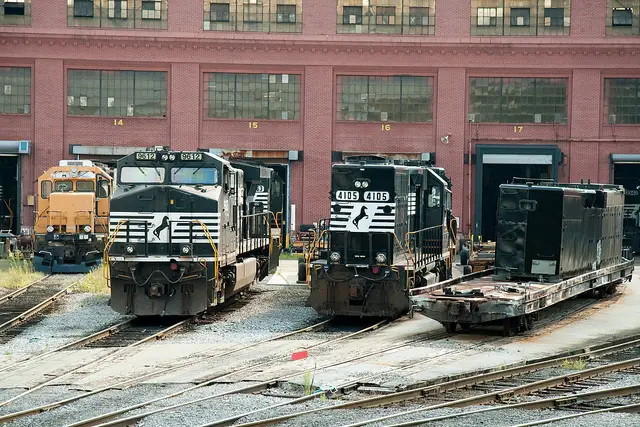
Rebuilds and Refurbishment
Norfolk Southern often purchases second hand locomotives, and rebuild them to their standards. The corporation has discovered that this is cost effective and environmentally friendly, as opposed to purchasing new locomotives. Below are a few notable rebuild programs that have been completed and are ongoing at the Juniata Locomotive Shops to that demonstrate the high quality of work and dedication of the shop employees.
SD40E Program
The SD40E program began in 2008 as an effort to rebuild former Conrail EMD SD50 locomotives. The EMD SD50 did not prove itself as a reliable motor, as it was constantly plagued with many electrical and other reliability problems. However, with the experienced professionals at Juniata, these unreliable units were converted into the SD40E, which contained brand new electrical equipment, a rebuilt EMD 16-645 prime mover, modernized cab, and rebuilt running gear. The final SD40E locomotive was released from the Juniata Shops in September of 2013. The SD40E stands as a testament to the integrity of work performed at Juniata, as they revitalized a locomotive with many mechanical issues, and turned it into a highly efficient and reliable locomotive.
EMD SD60E Program
Rebuilt from EMD SD60 locomotives, the SD60E project is one of the largest rebuild programs facilitated by Norfolk Southern. These locomotives underwent upgrades such as electrical, prime mover rebuilds, and a new cab called the “Crescent Cab”. The Crescent cab’s wide nose design increased the locomotives crash worthiness and improved crew comforts. The SD60E locomotive offered increased fuel efficiency due to the locomotives microprocessor upgrades that allowed for cleaner emissions and improved engine performance.
The SD60Es were one of the first locomotives to feature the new “split cooling” system, developed by team members within the shops. This innovation increased fuel economy by lowering the locomotives water temperature, reducing it by over 40 degrees. There are 160 SD60E rebuilds and can currently be seen hauling main line trains across the Norfolk Southern system.
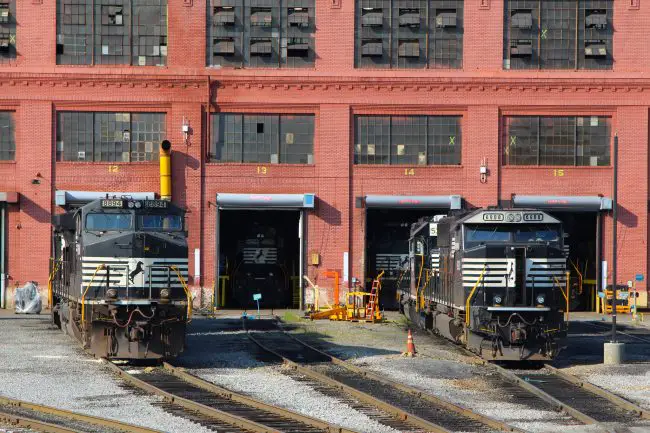
Throughout 2014, Norfolk Southern purchased many SD9043MACs from Union Pacific, to be rebuilt into SD70ACU locomotives. These units featured updated electronics, a rebuilt prime mover, and a new wide cab which meets the current Federal Railroad Administration (FRA) crash worthiness standards. These upgrades allowed the SD70ACU to perform similarly to the standards of the SD70ACe locomotive. Currently, there are 105 SD70ACU locomotives built and on the Norfolk Southern active locomotive roster. These units were also fitted with Positive Train Control (PTC) and other Norfolk Southern specific upgrades.
EMD GP40 Passenger Rebuilds
Various passenger railroads have ordered locomotive rebuilds through Juniata. In the late eighties, New Jersey Transit sent their ex-CNJ GP40P units to Juniata to rebuilt into GP40PH-2 locomotives. During rebuild, these locomotives received upgraded dash two electronics, and a Caterpillar head end power unit, replacing the steam generator. In the early nineties, NJ Transit placed two more orders of GP40 locomotives. These were rebuilt from former Conrail locomotives, and received upgraded electronics and a Caterpillar head end power generator.
Lasting Impact on the Railroad Industry
Surpassing 150 years old, Altoona Works is one of the oldest shops in the industry, famous for its innovation and precision. Perhaps the most innovative accomplishment of the shops is the construction of the first steel railcars, which were first designed and developed at the shops, which left a lasting legacy of safety and reliability for various service throughout the industry. The shops are also credited for developing the flagship passenger power for the Pennsylvania Railroad, the 4-6-2 K4s Pacific, which was engineered in Altoona in 1914, which serves as a true testament to the dedication of the design team at the shops.
The sheer quantity of locomotives built at the shops led the industry in locomotive production and design. The shops pioneered different methods of locomotive efficiency, which revolutionized how the industry operated and designed their locomotives. The shops continue to make an impact on the rail industry through their technologically advanced locomotive emission testing facility, which continues to serve as a benchmark in the industry. The shops continue to employ the most experienced railroaders, which contributes to its overwhelming success, and continue to inspire innovation within the railroad industry.
Lifelong Rail Enthusiast and Owner of Worldwide Rails
Recent Posts
What Is The Best DCC Starter Set?
When it comes to DCC, model railroaders have quite a few options to choose from. For beginners, it might be intimidating to break into the world of DCC, as there are many different brands, features,...
The Amtrak Pennsylvanian
The Amtrak Pennsylvanian is one of the most relaxing and scenic ways to get across the great state of Pennsylvania. Travel through the beautiful Pennsylvania Amish country, through the Alleghany...

Norfolk Southern Juniata Locomotive Shops in downtown Altoona, Pennsylvania
Locomotives galore sit outside the Norfolk Southern Juniata Locomotive Shops in downtown Altoona, Pennsylvania in this birds-eye view on November 3rd, 2021. The shops are just part of the large complex called Altoona Works, or Altoona Terminal.
According to Wikipedia: Altoona Works (also known as Altoona Terminal) is a large railroad industrial complex in Altoona, Pennsylvania. It was built between 1850 and 1925 by the Pennsylvania Railroad (PRR) to supply the railroad with locomotives, railroad cars and related equipment. For many years it was the largest railroad shop complex in the world.
From the NS Website: At our Juniata locomotive shop in Altoona, Pennsylvania, Norfolk Southern regularly recycles locomotives into more efficient machines, benefiting both customers and the environment. We can strip a locomotive down to the bare frame and completely rebuild it, including the engine, alternator, wiring, cab, trucks, combos and running gearall in 6.5 days.
NS also operates our own indoor locomotive emissions-testing facility, unique among railroads, which allows us to test locomotives year-round to increase fuel efficiency and meet EPA regulations.
Tech Info: DJI Mavic Air 2S Drone, RAW, 22mm, f/2.8, 1/120, ISO 120.
Norfolk Southern’s Juniata Locomotive Shop
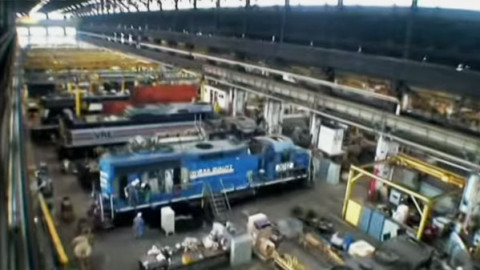
Norfolk Southern’s Juniata Locomotive shop can rebuild an entire locomotive in six and one half days flat!
Located in Altoona, Pennsylvania, the Norfolk Southern’s Juniata Locomotive shop is one of the busiest and oldest repair shops in the world!
It sits on 30 acres and can repair and service up to 1200 locomotives per year.
Out of Norfolk Southern’s 3800 locomotives , the shop usually sees 1200 of those locomotives per year for service and maintenance.
It is the only repair shop that has 5 massive inside service bays that are each about 2 football fields long!
The locomotive shop utilizes 27 tracks reaching to the 5 bays and gigantic round table to direct the locomotives to the proper bay to be worked on. Additionally, inside the bays are huge overhead cranes run by as few as 3 people that can actually lift a 200 ton locomotive from one track to the next to be worked on.
In the process of rebuilding a locomotive, they actually strip the locomotive down to the frame and start over with everything from wiring, engines and paint. By rebuilding a locomotive, they can add 15 to 20 years to the service life of the locomotive!
Let us know if you have worked on one of this giant machines or have taken a tour of such a facility! We love would love to hear your comments!
Don’t Miss Out! Sign up for the Latest Updates
- Educational
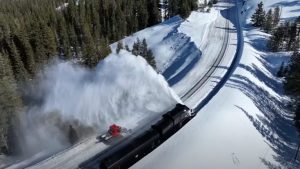
UP Rotary Takes On The Donner Pass
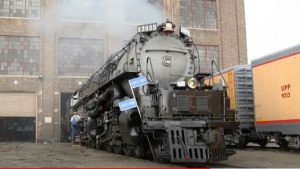
UP 3985 Test Run in 2010
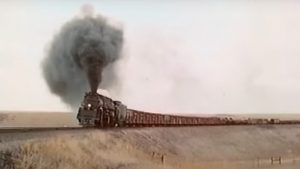
Big Boy Locomotives In Their Heyday
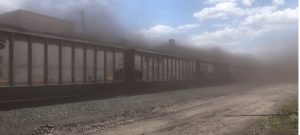
Norfolk Southern Coal Train Blankets Town
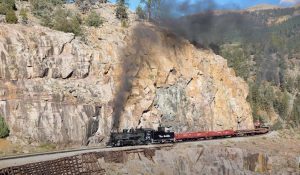
Durango & Silverton Dramatic Canyon Run
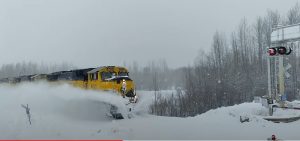
Alaska Railroad’s Snow Covered Rails
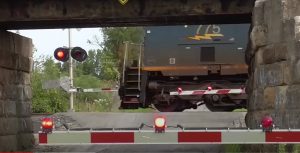
Dangerous Grade Crossing in Ohio
- Photo Gallery
© 2024 Train Fanatics
- Terms Of Use
- Privacy Policy
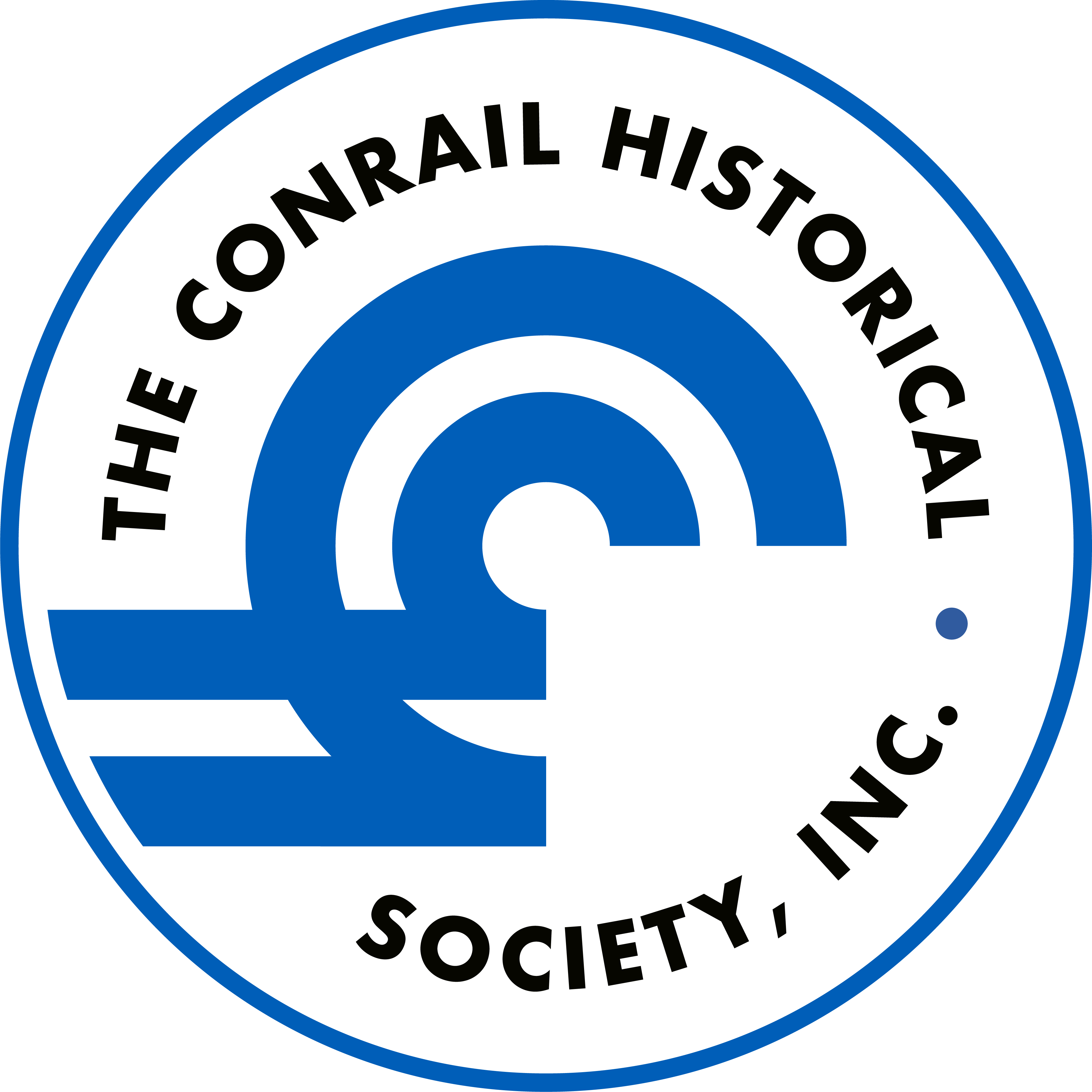
Juniata Locomotive Shops
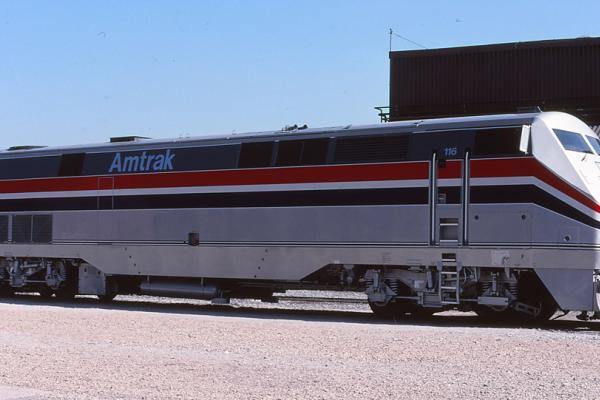
ATSF GE being worked on in JBS
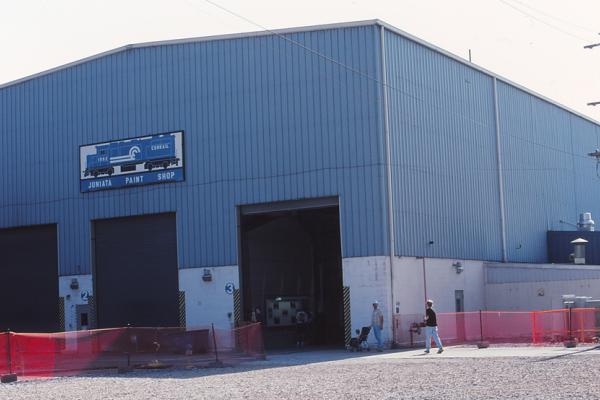
Conrail's Juniata Paint Shop
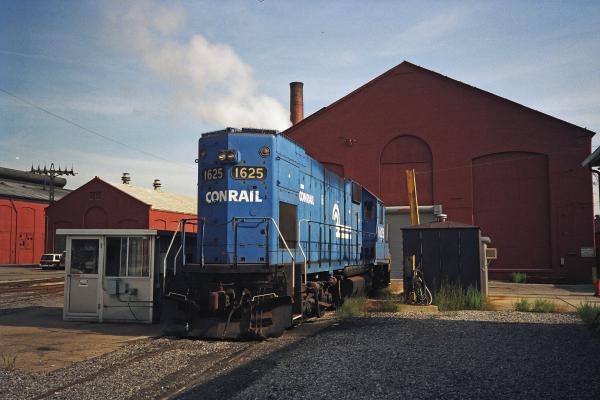
CR 1625 at Juniata Locomotive Shop on October 3, 1991
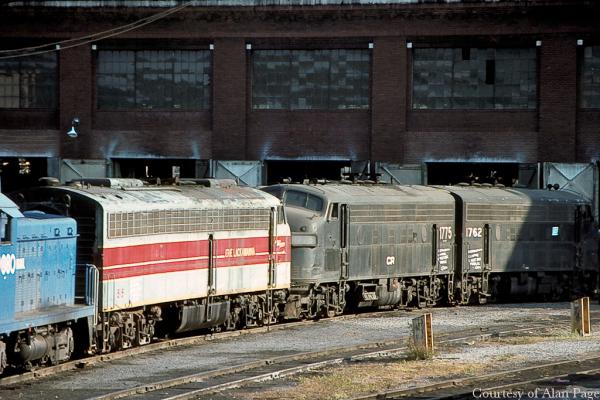
CR 1775 Altoona, PA 5-22-1977
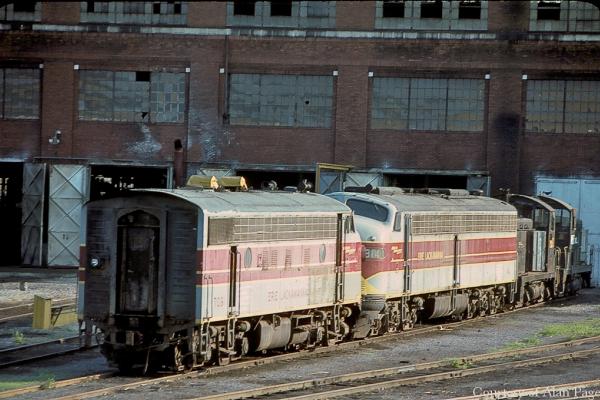
CR 1885 Altoona, PA 5-22-1977
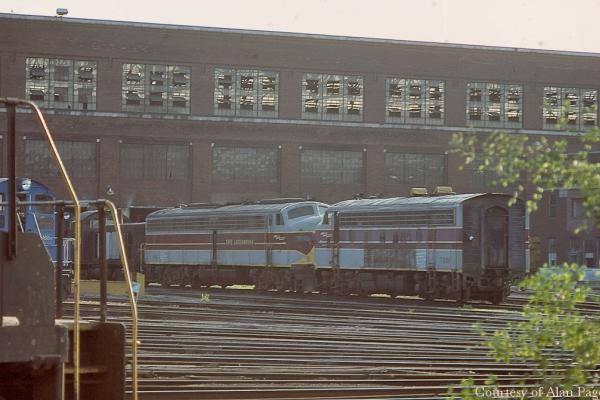
CR 2002 JUNIATA BACK SHOP
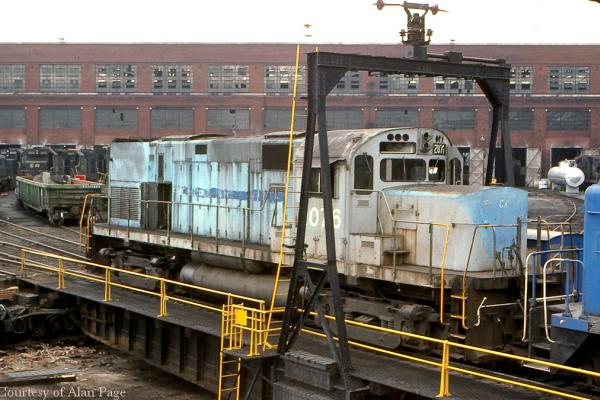
CR 2076 Altoona, PA 7-25-1978
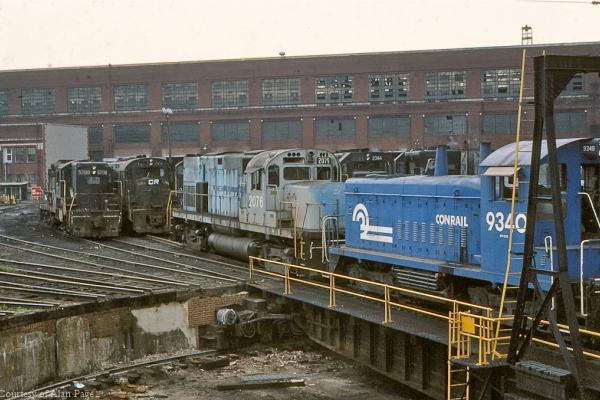
CR 2168 and CR 2720 Altoona, PA 1-1-1982
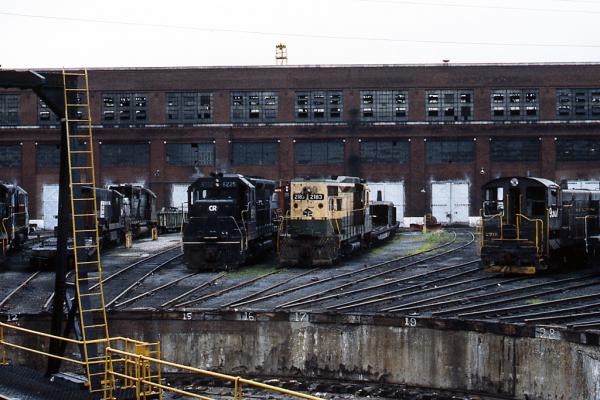
CR 2183 Altoona, PA 7/2/1978
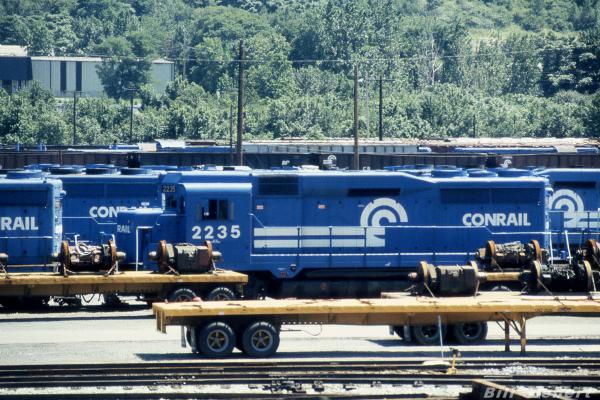
CR 2235 Altoona 1990
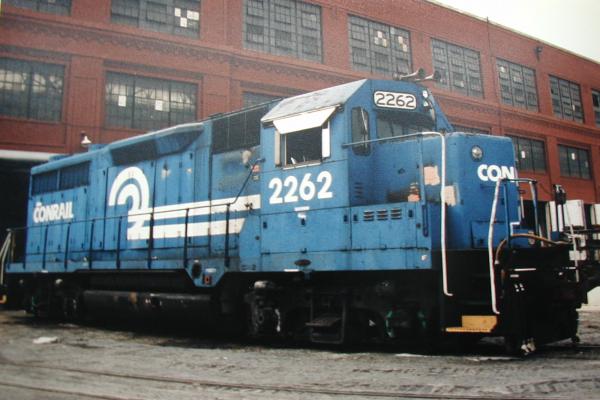
CR 2262 Altoona, PA 11-3-1994
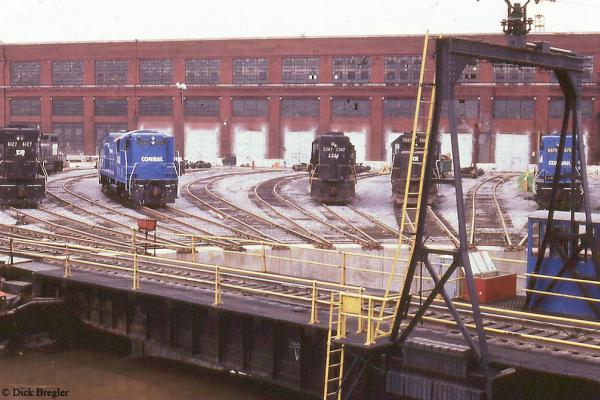
CR 2347, CR 6670, and CR 6127 Altoona, PA 1981
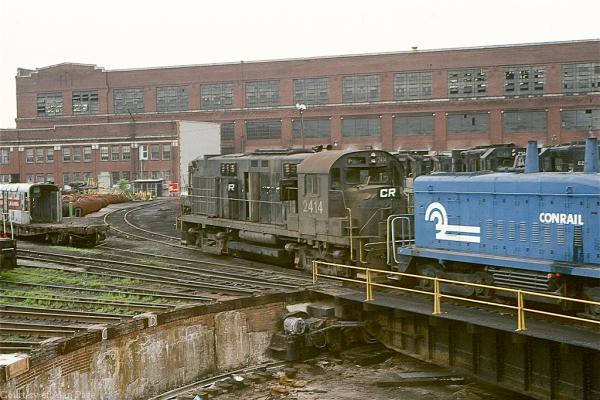
CR 2414 Altoona, PA 7-25-1978
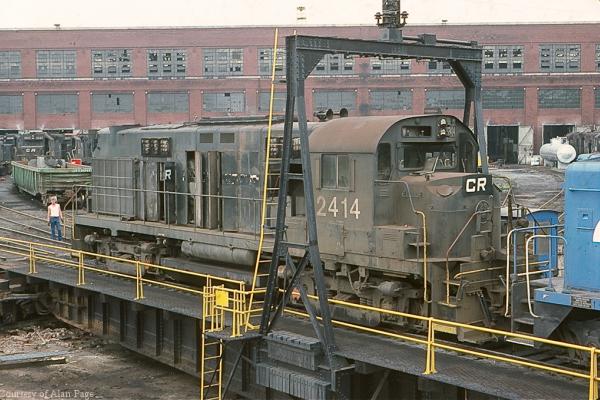
CR 2483 Altoona, PA 3-27-1978

CR 2492 Altoona, PA 3-27-1978
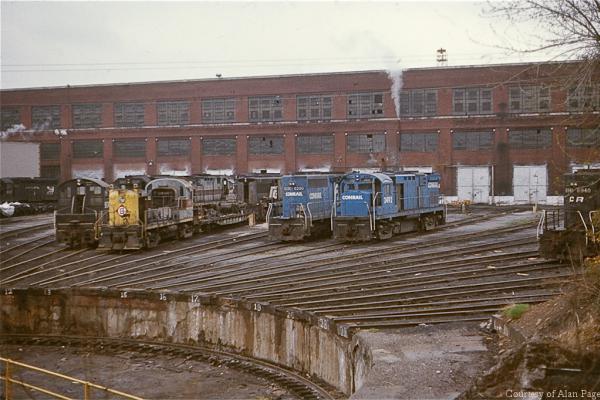
CR 2855 Altoona, PA 5/27/1978
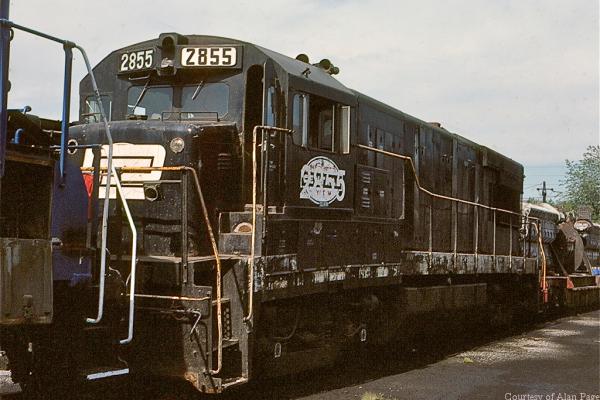
CR 2855 Altoona, PA 8-7-1977
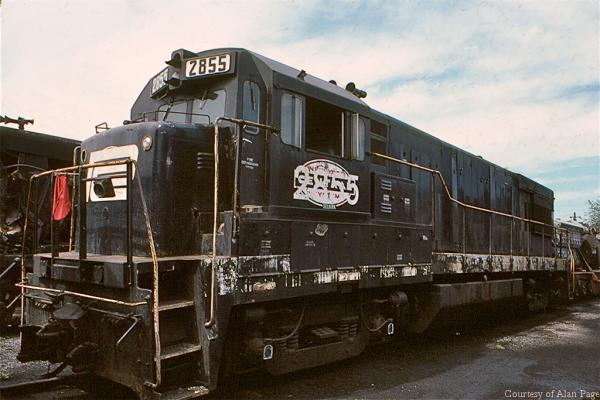
CR 3123 Altoona, PA 8-7-1977
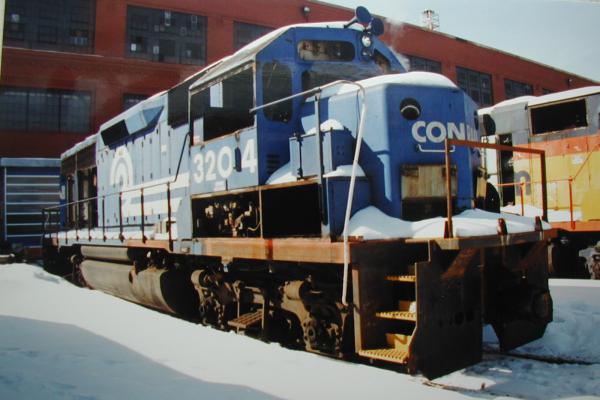
CR 3204 2-16-94 Altoona, PA

CR 3310 inside the Juniata Shops
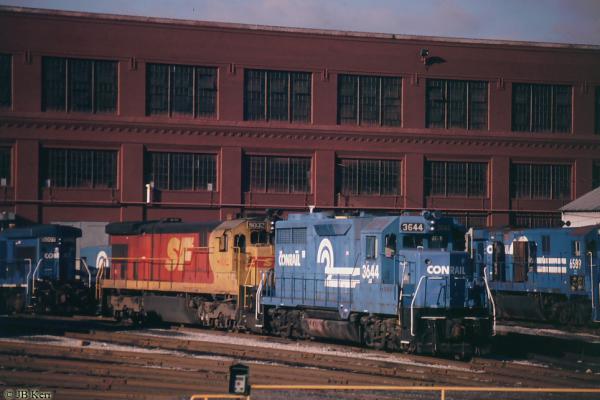
CR 3644 Altoona, PA 4-1-1996
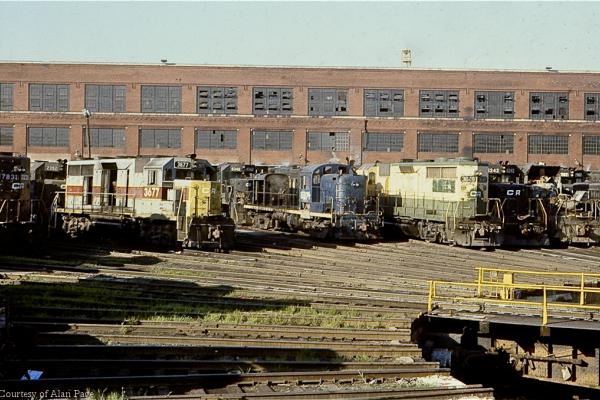
CR 3649 Altoona, PA 8-18-1978
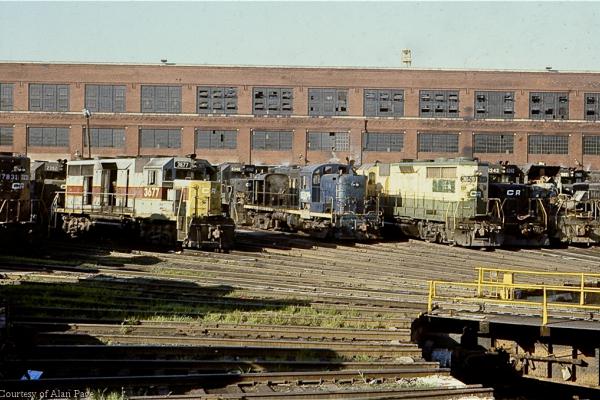
CR 3677 Altoona, PA 8-18-1978

CR 3677 Altoona, PA 8-21-1978
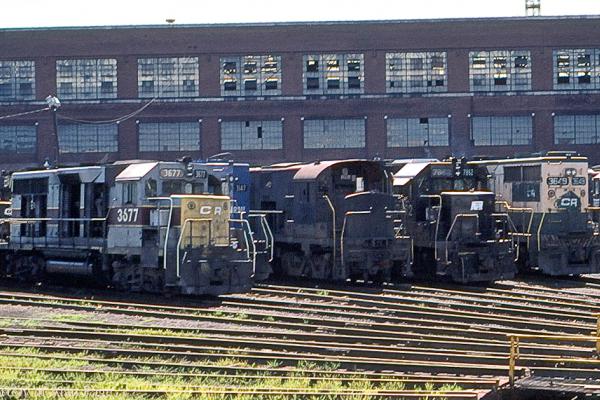
CR 3862 Altoona, PA 5-22-1977
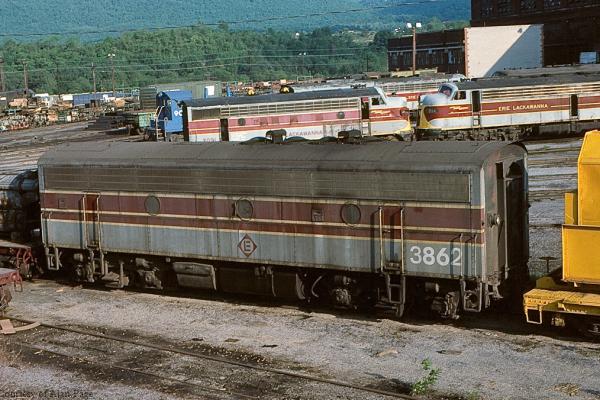
CR 4003 Altoona, PA 5/27/1978

CR 4004 Altoona, PA 5-22-1977
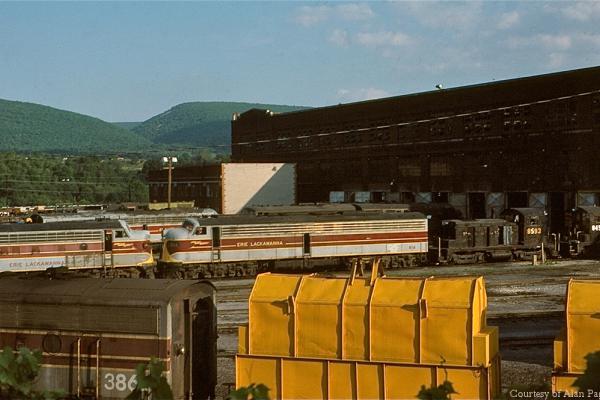
CR 4006 Altoona, PA 5-22-1977

CR 4009 Altoona, PA 5/27/1978
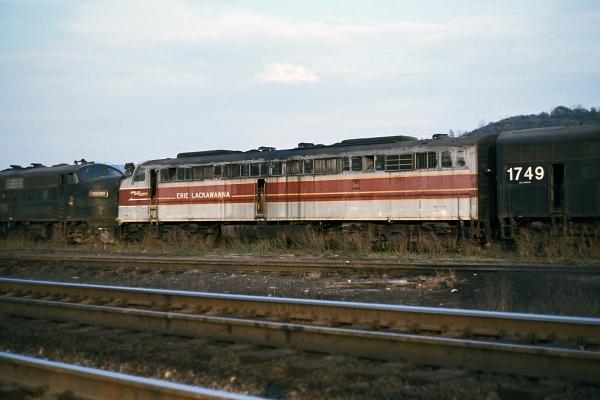
CR 4009 ex-EL 819 at Altoona on October 16, 1976
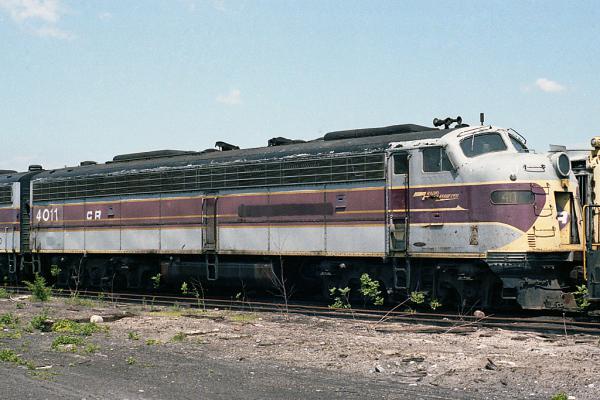
CR 4011 Altoona, PA 5/27/1978
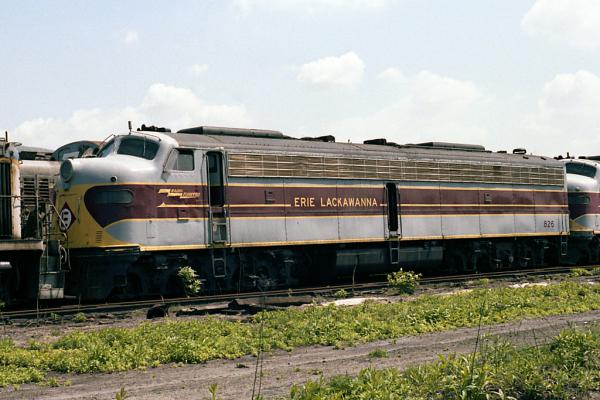
CR 4015 Altoona, PA 5/27/1978
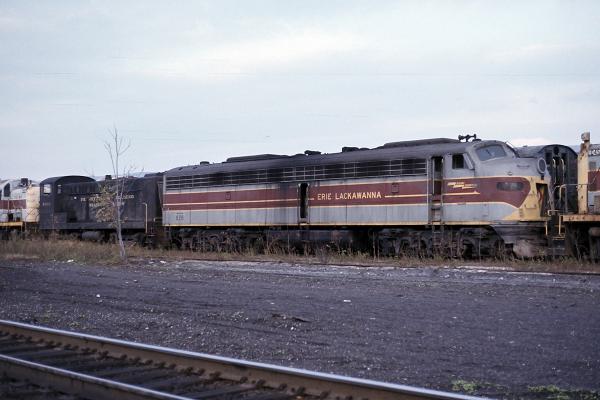
CR 4017 ex-EL 828 at Altoona on October 16, 1976
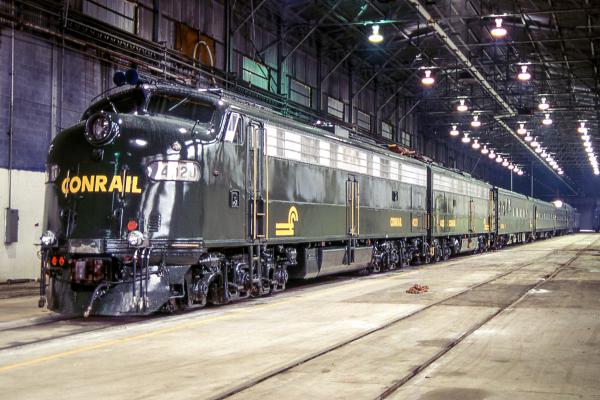
CR 4020 IN MISC SHOP

CR 4093 ex-NYC Altoona, PA 5/27/1978
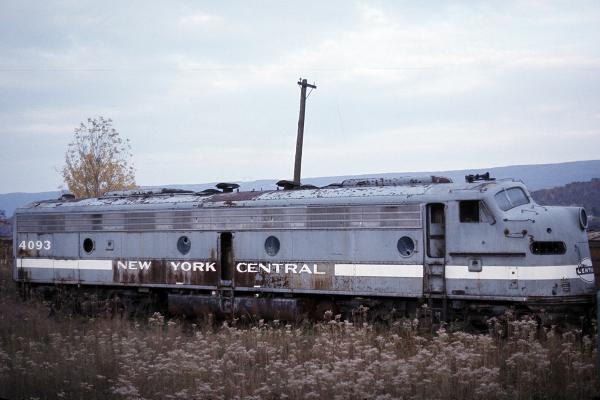
CR 4093 ex-NYC at Altoona on October 15, 1976
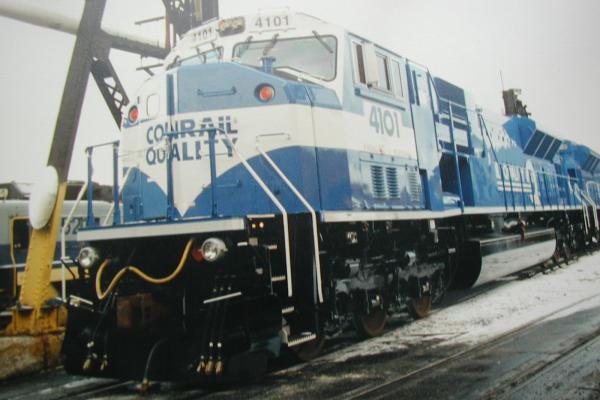
CR 4101 at Juniata

CR 4103 at Juniata
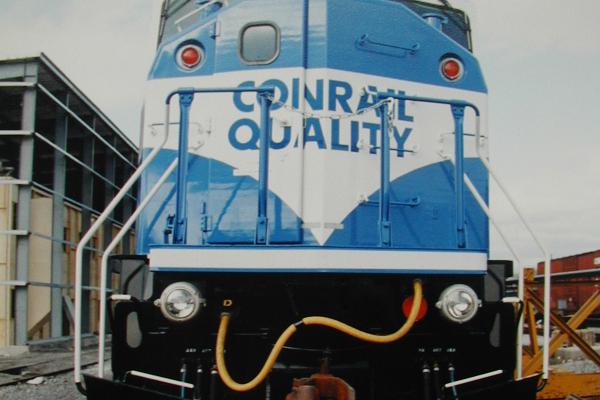
CR 4123 at Juniata

CR 4129 at Altoona, PA 10/05/97

CR 4141 SD70mac Altoona 05-98
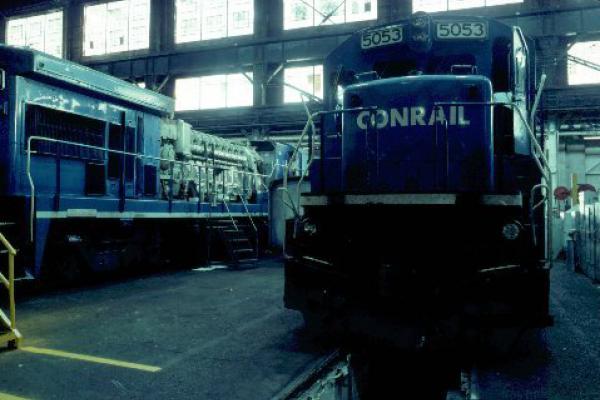
CR 5053 in JBS
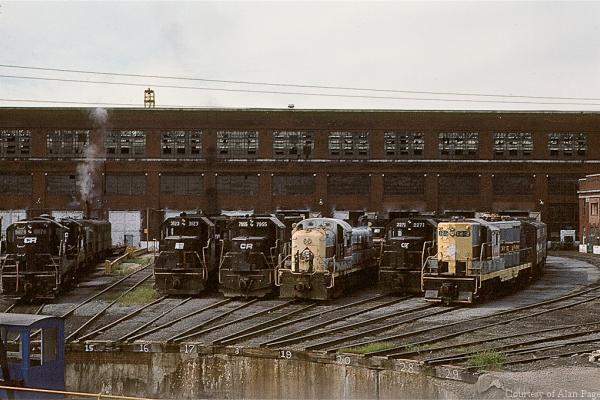

CR 5253 Altoona, PA 8-7-1977
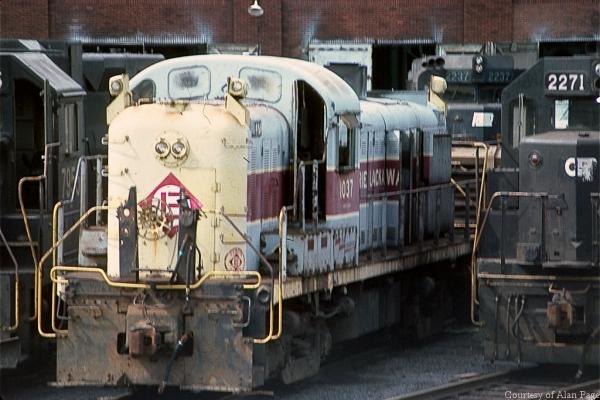
CR 5271 Altoona, PA 3-27-1978

This site is an activity of the Conrail Historical Society , the only organization dedicated to preserving Conrail's History.
Norfolk Southern Juniata Locomotive Shop - Photo Tour
Photos taken at employee appreciation day event 09/05/2016, photo page 1 - miscellaneous photos taken at the ns juniata shops, signs outside the general office building at the ns juniata shops, ho scale model of the ns juniata shops complex located in the general office building, ns tribute wall for veterans inside the ns juniata locomotive shop, locomotives undergoing repairs inside the shop, engine overhaul, main alternator overhaul, locomotive truck rebuilding, traction motor/wheel combos, wheels, axles, a look at the locomotive rebuild lines inside the smith shop, in addition to painting its own locomotives, ns also does contract work for other companies., emissions shop, ns has its own indoor test facility to test locomotive emissions in order to meet epa regulations and improve fuel efficiency..
Back to top of page
Go to the next page of the tour
Back to the tour main page
Please Note: This is the personal website of Chris R. Toth . It is not affiliated with, sponsored nor supported by Norfolk Southern Corporation. Information and photos from this website should not be used without permission and/or proper credit.
You are using an outdated browser. Please upgrade your browser or activate Google Chrome Frame to improve your experience.
The Museum will be closed on Memorial Day, Monday, May 27, 2024.
Today’s Hours: 10:00 AM - 4:00 PM
717-687-8628

Below are the “highlights” of our collection, along with descriptions and photos. This page is currently being updated. Please note, that not all photographs accurately depict the current condition of our equipment, as some pieces have undergone or are currently awaiting restoration. A floor plan of the Museum’s interior can be found here and here .
Collections
- Virtual Tours
- Restoration
- Donations of Artifacts
- Search Our Collections
- Research Services
- Archives Ordering

Rolling Stock Hall
Locomotives – diesel.
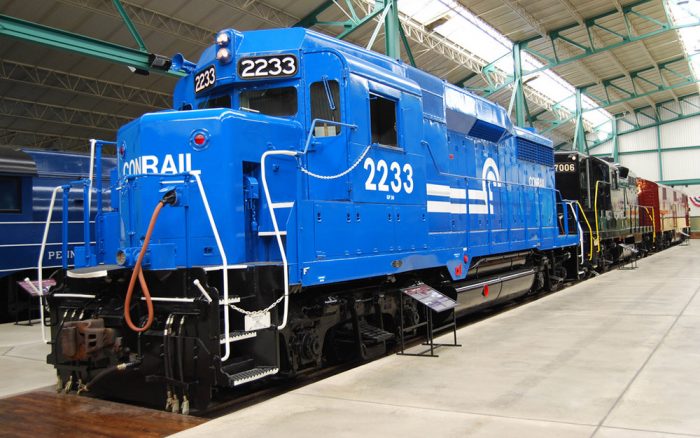
A Second Generation Diesel Locomotive
Click Here for Virtual Tour
Click Here for Exhibit Label
Class: GP-30
Built: 1963 by General Motors, Electro-Motive Division (EMD), La Grange, IL Illinois
Retired: 1984
The “Second Generation” of diesels met a growing demand for larger and more powerful diesels, designed for both high-speed and heavy low-speed freight trains. These improved locomotives were quickly replaced by even more powerful models and assigned to heavier mainline trains or yard and local switching jobs, making them old before their time.
The GP30 can be identified by its distinctively-styled roofline. Many crews disliked the cabs for their noise, poor heating, and lack of headroom.
Fun Fact: No. 2233 was one of the last locomotives painted Conrail blue by former employees at the former Pennsylvania Railroad/Penn Central/Conrail Juniata Shops.
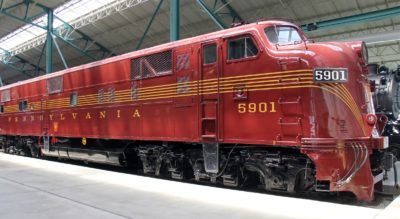
The E7: An Efficient Diesel Electric
Click Here for Virtual Tours of the Engine Room & Engine Cab
Class: E7a
Built: 1945 by General Motors, Electro-Motive Division, La Grange, Illinois
Retired: 1973
Though initially unsure about the new diesel-electric technology and suffering from a lack of diesel refueling stations, the Pennsylvania Railroad was reluctant at first to put the new E7s to work. It quickly became apparent, however, that the new diesel-electrics operated with great efficiency and reliability. Almost immediately, orders went out to several manufacturers for new diesels to re-equip the entire “Blue Ribbon Fleet” of passenger trains.
Due to be scrapped shortly after retirement, quick thinking on the part of railroad employees saved the locomotive, hiding it for a time in an abandoned section of the Harrisburg roundhouse. The Pennsylvania Historical and Museum Commission raised the $20,000 scrap value to purchase it in 1976.
Fun Fact: The 5901 and sister engine 5900 were the first diesel-electric passenger locomotives built for and delivered to the Pennsylvania Railroad.
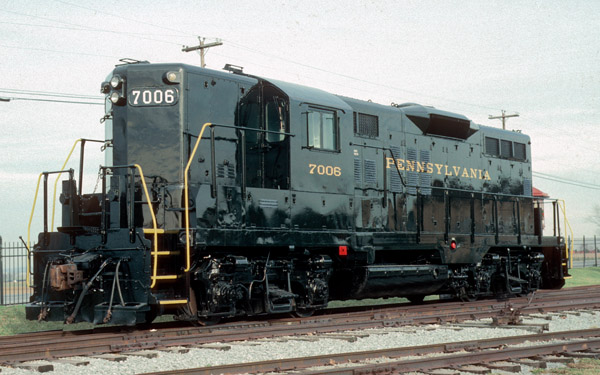
An All-Purpose Model
Class: GP-9
Built: 1955 by General Motors, Electro-Motive Division, La Grange, Illinois
Retired: 1985 The success of the GP9’s design can be attributed to its versatility and economy. The “GP” in the GP9’s name stood for “General Purpose.” Truly a general purpose model, these locomotives could switch freight cars in a yard one day, be coupled to other locomotives and pull a heavy coal drag the next, and finish off with a turn on a passenger train. The Electro-Motive Division of General Motors designed the locomotive to be operated easily in either direction.
This locomotive’s versatility and low-maintenance costs allowed it to outlive the Pennsylvania Railroad. It continued in service for Penn Central and Conrail.
Fun Fact: General Motors, Electro-Motive Division produced more than 4,000 GP9’s between 1954 and 1963.
Locomotives – Electric
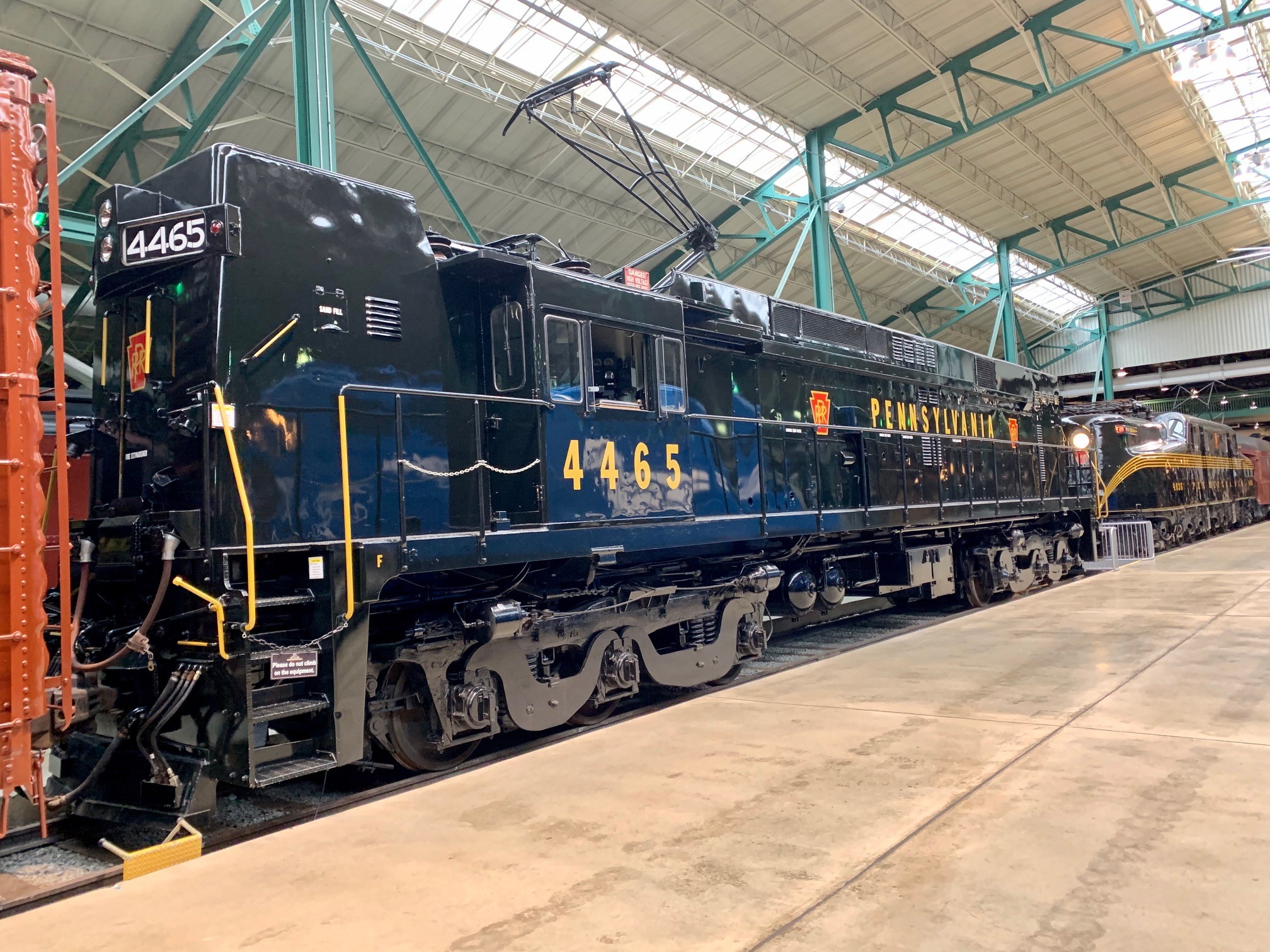
A Powerful Locomotive Known as a “Brick”
Class: E-44a
Built: 1963 by Pennsylvania Railroad and General Electric, Erie, Pennsylvania
Retired: 1991
The E44 class electric, built with a silicon rectifier, delivered an amazing 5000 horsepower. Referring to its pair of three-axle trucks and boxy carbody, train crews often called the E44’s “bricks.” The unit served the PRR in freight service for five years before becoming part of Penn Central and finally Conrail.
Amtrak considered using the big electric for maintenance-of-way service on the Northeast Corridor until newer federal regulations addressing the use and disposal of polychlorinated biphenyl (PCBs), a toxic chemical used to cool the transformer, made its operation cost prohibitive. A sole unit, No. 4465, was officially turned over to the Railroad Museum of Pennsylvania on April 27, 1991.
Fun Fact: No. 4465 was the last electric locomotive built for the Pennsylvania Railroad.
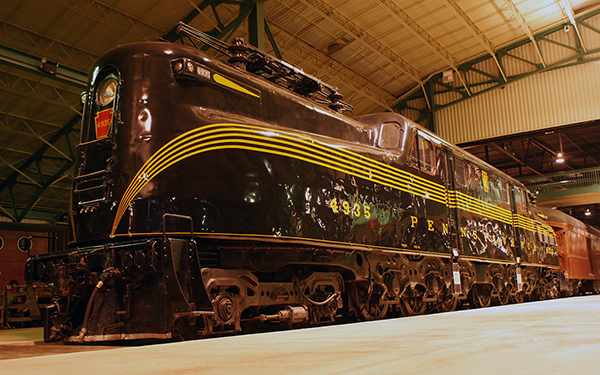
The GG1: The Most Successful Electric Locomotive Ever Built
Class: GG-1
Built: 1943 by Pennsylvania Railroad, Juniata Shops and General Electric, Altoona, Pennsylvania
Retired: 1980
As the Pennsylvania Railroad embarked on its ambitious electrification project in the 1930s, it continued to develop and test new locomotive designs. The goal was to produce a new electric locomotive capable of pulling heavy passenger trains at speeds of up to 100 mph. The Pennsylvania Railroad chose the GG1 as the foundation of its new roster of electrics.
After a prototype was built, the Pennsylvania Railroad hired industrial designer Raymond Loewy to improve upon the overall appearance of the GG1 for the production models, like No. 4935. Among his many refinements to the look of the GG1 were their welded, instead of riveted, bodies and iconic “cat’s whiskers” pinstriping. When No. 4935 was restored in 1977 to its 1943 appearance and rededicated in Washington’s Union Station, Loewy placed his signature on the locomotive’s nose. No. 4935 also pulled the last run of a Railway Post Office in July 1977.
Fun Fact: Because the sum of its road numbers equaled “21,” crews nicknamed the locomotive “Blackjack.”
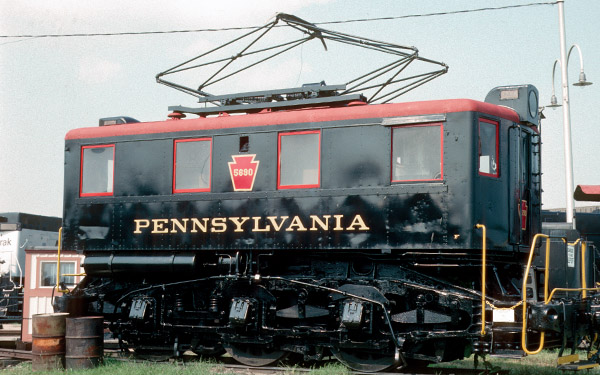
A New Style of Switcher
Built: 1934 by Pennsylvania Railroad in association with Westinghouse Electric & Allis-Chalmers Manufacturing Company, Altoona, Pennsylvania
Retired: 1971
Passenger trains required servicing at major terminals, needing to be broken apart, cleaned, serviced, inspected and reassembled for their next departure. The passenger coach yards needed small and powerful switchers that could be operated on the overhead electrified wires. As passenger revenues declined in the1950s and 60s, railroads scaled back on both electrified coach yards and these switching locomotives.
No. 5690 was constructed with the last group of B1 electric switchers, often running around the clock moving empty passenger cars across the yards. The No. 5690 spent most of its life in New York’s Sunnyside Yard.
Fun Fact: The B1’s earned the name “rats” by crews watching the way they shuffled around railyards as they switched cars.

Class: EPA
Built: 1931 by Bethlehem Steel Company, Wilmington, Delaware
Retired: c. 1980
On July 26, 1931, regularly scheduled, electric train service began to suburban Philadelphia communities, and electric multiple-unit passenger cars were intended to replace steam on these lines. These multiple-unit passenger cars accelerated faster and afforded passengers other amenities such as electric heat and reduced noise and smoke.
No. 800 and other Reading multiple-unit cars had spring-loaded high-voltage bus connectors on the roof that energized the other cars when contact was made. This permitted the operation of a multiple-unit train with only one, but typically two, pantographs raised – a departure from needing every pantograph raised. This virtually eliminated sparking and reduced wear and tear on the overhead wires.
Fun Fact: A 10.8 mile commute from Philadelphia to Chestnut Hill that once took 40-44 minutes by steam train was reduced to only 29 minutes by electric train.
Locomotives – Steam
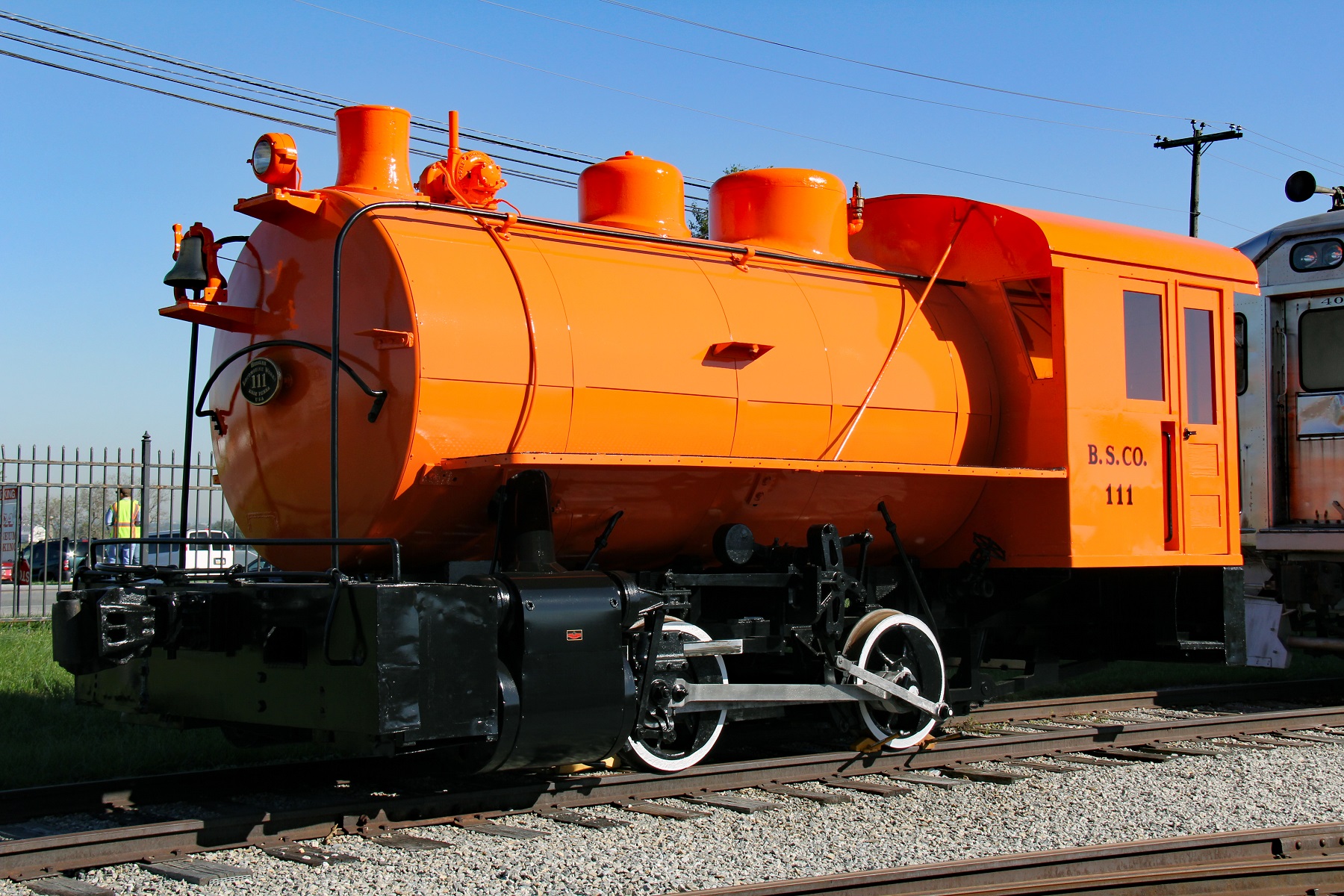
Class: 4-19
Built: 1941 by Erie City Iron Works, Erie, Pennsylvania to Heisler Locomotive Works specifications
Retired: c. 1972
Fireless steam locomotives use no fire to make steam. Instead, steam, generated by a stationary steam engine, is charged into the locomotive’s boiler, which heats up the water already in the boiler to make more steam. One advantage of the fireless locomotive is that it does not produce smoke or sparks, which is particularly beneficial when operating in industries where a fire hazard exists.
Despite its small size, No. 111 employs modern features similar to those of some of the world’s largest steam locomotives being built at the same time, including a welded storage tank, Timken roller bearings, and Walschaert’s type valve-gear.
Fun Fact: At the time of its donation, this locomotive was still in serviceable condition and was used as an emergency backup engine at the Bethlehem Steel’s Bethlehem Plant.
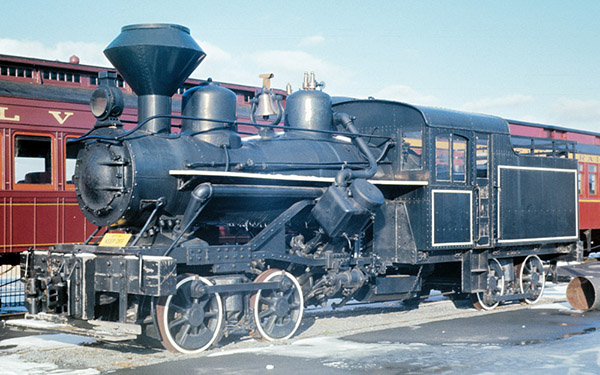
A New Type of Geared Locomotive
Class: 53-8-38
Built: 1918 by Heisler Locomotive Works, Erie, Pennsylvania
Retired: 1965
The Heisler featured three features that set it apart. The first was a “V” type engine similar in concept to an automobile. The second was its use of connecting rods on the outside of the truck frames to power the second axle. The third was the use of a heavy-duty gear case to protect the gears and ensure longevity. The latter made it especially suited for mining and quarry operations.
The Heisler worked for several different owners during its lifetime and became the first locomotive purchased by the Commonwealth for the Museum.
Fun Fact: This locomotive is one of only 35 Heisler products of the Company known to survive today.
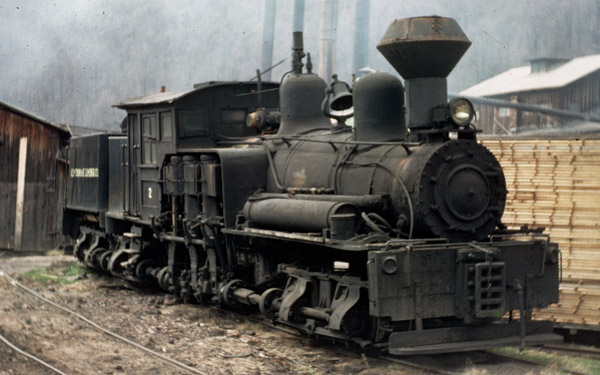
Moving Lumber from Forest to Mill
Class: 65-3
Built: 1906 by Lima Locomotive & Machine Company, Lima, Ohio
Retired: c. 1964
Ephraim Shay, a Michigan lumberman, needed to find a way to move timber as cheaply as possible in any type of weather. He set to work developing a locomotive that could operate a heavy train over light rails, steep grades, and sharp curves, while remaining relatively inexpensive to build and maintain. He took his design to the Lima Locomotive Works and launched the beginnings of the remarkable, hard-working Shay locomotives.
The Shay had a unique drive train with its pistons and drive shafts set off-center on one side, making maintenance easier. The No. 1 is one of the most common versions of the Shay with several added features: a firebox that could burn wood or coal; a syphon pump that could draw water from streams, and adjustable couplers to accommodate log cars with varying heights.
Fun Fact: Compared to a typical rod locomotive of the same power, a Shay weighed 54 tons less, was 20 feet shorter, and could pull 63% more up a 6% grade.
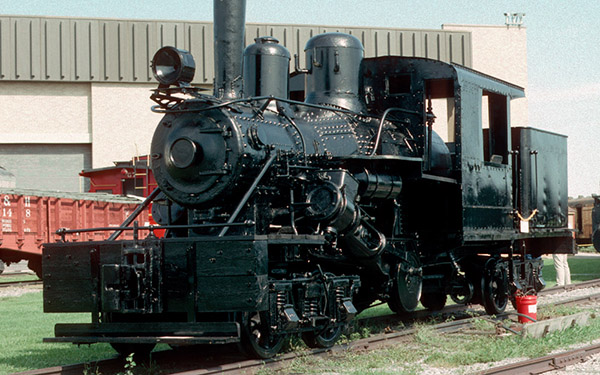
The “Poor Man’s Locomotive”
Class: Climax class B
Built: 1913 by Climax Manufacturing Company, Corry, Pennsylvania
Retired: c. 1956
Pennsylvania lumberman Charles Scott approached the Climax Manufacturing Company, makers of farm implements and oil-drilling rigs, to design a steam locomotive to help get timber off the mountain. They designed the Climax to be powerful, agile, cheap and even disposable. The Class “A”, their first design was among the most flexible and nimble locomotives ever built, making use of an offset bevel gear. It lacked only one thing – size.
The Class B solved that problem and could be built in sizes from 17 to 62 tons. No. 4 is a 40-ton Class B model.
Fun Fact: The Climax could climb steeper grades and navigate sharper curves than any other type of geared locomotive its own weight.
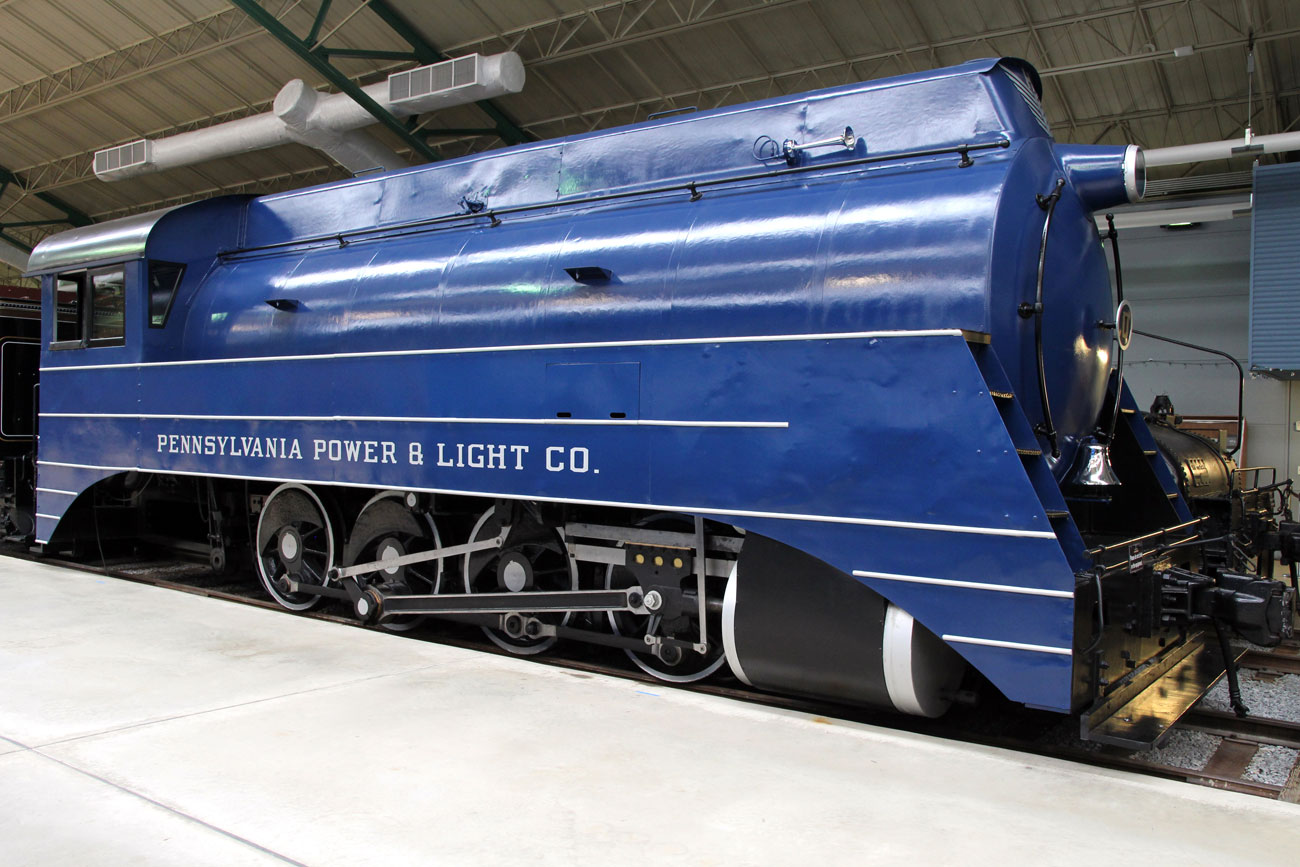
Class: 8-30
Built: 1939, by Heisler Locomotive Works, Erie, Pennsylvania
Retired: 1969
In an era when large industries often purchased their small switch engines, hired their own crews, and performed the work themselves, the fireless steam locomotives became very popular. Onsite boiler houses provided a steady source of steam, and the locomotives were like a thermos bottle on wheels, filled with enough steam to operate for several hours and undertake work in such areas as munitions factories and textile mills.
The Pennsylvania Power & Light Fireless Locomotive “D” was originally built and streamlined for its appearance at the 1940s New York World’s Fair to show off Heisler’s manufacturing capabilities. After the Fair it was put to use by the Hammermill Paper Company and later Pennsylvania Power and Light, outliving numerous other steam locomotives.
Fun Fact: This engine is the only 0-8-0 fireless, and ultimately, the largest one of its kind ever built.
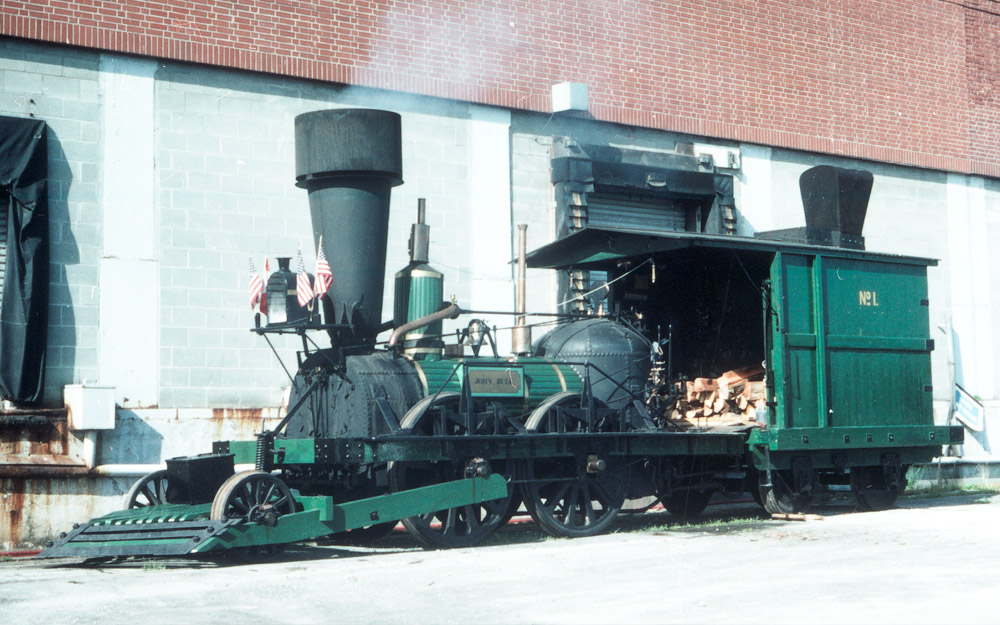
A Tale of Two Locomotives
Built: 1940 (locomotive) 1927 (tender) by Pennsylvania Railroad, Altoona, Pennsylvania
The original John Bull was purchased by the Camden and Amboy Railroad from British locomotive builder Robert Stephenson and Company. Shipped to America in parts, and without any instructions, young engineer Isaac Dripps assembled the locomotive in ten days. Many modifications were soon made, including a tender, a headlight, and the first cowcatcher.
When it absorbed the Camden and Amboy Railroad in 1871, the Pennsylvania Railroad acquired the original John Bull , restoring it for the Centennial Exposition in 1876. In 1884, the Pennsylvania Railroad donated the locomotive to the Smithsonian Institution, which allowed them to operate
it at fairs and expositions for more than 50 years. For the 1940 New York World’s Fair, preservation concerns prevented the railroad from operating the original John Bull , so they built a working replica, which also ran at the 1948-1949 Chicago Railroad Fair.
Fun Fact: The replica locomotive was used under steam for a 1946 Pennsylvania promotional film and at the 1948-49 Chicago Railroad Fair. Once in the collection of the Railroad Museum of Pennsylvania, the replica John Bull was restored and operated under its own power several times between 1983 and 1999.
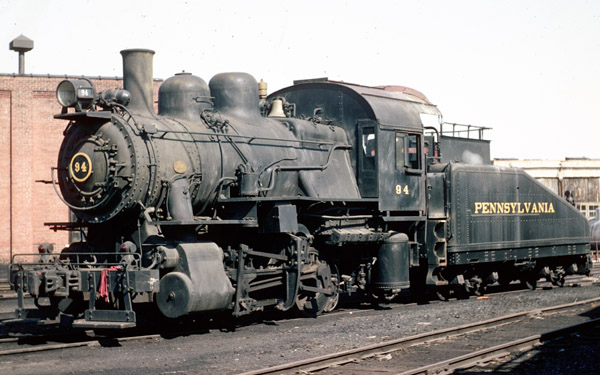
The 0-4-0 Switcher: A Compact Powerhouse
Class: A5s
Built: 1917 by Pennsylvania Railroad, Juniata Shops, Altoona, Pennsylvania
Retired: 1956
Built to move railroad cars around, often assembling and disassembling trains, a switcher locomotive needed to be powerful, nimble, and compact. One of the heaviest 0-4-0’s ever built, No. 94 was capable of getting even hefty cars moving quickly – the result of the efficient 0-4-0 wheel arrangement that put all of the switcher’s weight on its drive wheels.
The tender paired here with No. 94 features the distinctive “slope-back” design, which allows for better visibility of the rear.
Fun Fact: Switchers have been described as the railroad version of the tugboat.
Listed on the National Register of Historic Places
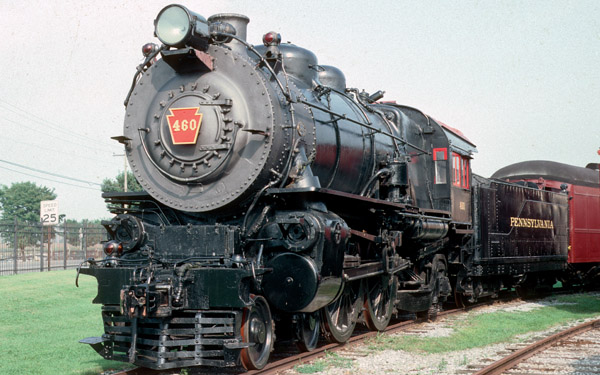
A Fast Runner
Class: E6s
Built: 1914 by Pennsylvania Railroad, Juniata Shops, Altoona, Pennsylvania
On June 11, 1927, Charles Lindbergh was honored for making the first solo, nonstop, transatlantic flight. This event in Washington, D.C. was filmed by several news companies—many of whom sent their film by airplane to theaters in New York City. One company, the International News Reel Corporation, sent their film by railroad. The train, pulled by engine No. 460, raced toward New York City at a top speed of 115 miles per hour. Even at that speed, it was still beaten by the airplane. However, the films delivered by airplanes still needed to be developed, while the films aboard the train were processed en route and were shown in theaters first.
Fun Fact: No. 460 raced an airplane from Washington, D.C. to New York City to deliver newsreel footage of Charles Lindbergh’s “Welcome Home” reception.

The Standard Freight Locomotive
Built: 1888 by Pennsylvania Railroad, Altoona Works, Altoona, Pennsylvania
Retired: 1939
The Pennsylvania Railroad’s Class R (later H3) steam locomotives became the primary mainline freight locomotive. The Altoona Shops built more than 825 between 1885 and 1898. Its 2-8-0, or “Consolidation” type wheel arrangement became the most popular design for freight locomotives across the country.
The locomotive design was the first to introduce the Belpaire Firebox. Named for its inventor Alfred Belpaire, this design provided greater strength than previous designs and allowed for more space for steam, as well as more area for combustion.
Fun Fact: By 1924, the Pennsylvania Railroad had over 3,300 class H locomotives in service, which accounted for 44% of its entire locomotive roster. No. 1187 remains the sole survivor of the Class R (reclassified H3 in 1897).
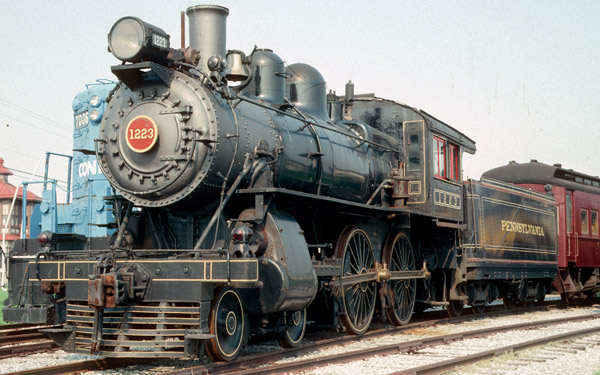
No. 1223: An “American” Star
Class: D16sb
Built: 1905 by Pennsylvania Railroad, Juniata Shops, Altoona, Pennsylvania
Retired: 1950
The durable 4-4-0 had nation-wide appeal through most of the 19 th -century, earning it the name “American.” The Pennsylvania Railroad perfected its design, creating the D16 class as the most modern American-style locomotives ever built. No. 1223 pulled passenger trains on Maryland, Delaware, and New Jersey lines for 45 years.
The locomotive was retired in 1950 and later borrowed by the Strasburg Rail Road beginning in 1960. It would once again return to steam service in 1965. It also pulled daily tourist trains and special excursions on the Strasburg Rail Road from 1965 until 1989.
Fun Fact: This locomotive had a star-lit career, appearing on the silver screen in Broadway Limited (1941) and Hello, Dolly! (1969), as well as several television documentaries and commercials.
Listed on the National Register of Historic Places.

A Standard Freight Locomotive
Class: H6sb
Built: 1905 by Baldwin Locomotive Works, Philadelphia, Pennsylvania
At the dawn of the 20 th century, the Pennsylvania Railroad billed itself as the “Standard Railroad of the World,” emerging as a clear leader in American railroading. Most of the road’s freight trains were pulled by various “H” class locomotives. Even among a class of 2,029 units, no two H6 locomotives were exactly the same.
No. 2846 received special accessories over its lifetime. These included: a superheater to further dry the steam on its path between the boiler and the pistons; a power reverse lever on the engineer’s side; and a rare pipe from the steam dome to the pilot wheels on the fireman’s side used in winter to discharge steam over frozen switch points.
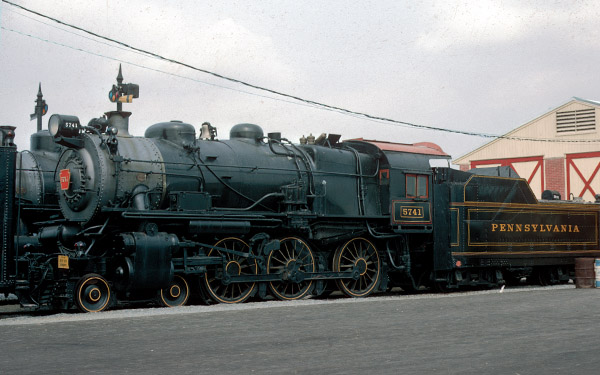
Power for the Masses
Class: G5s
Built: 1924 by Pennsylvania Railroad, Juniata Shops, Altoona, Pennsylvania
Retired: 1955
The popularity of commuter trains brought about the development of the G5s, the largest and heaviest ten-wheelers ever built. They filled the need to combine high-speed service with the demands of frequent starts and stops. Designed by Pennsylvania Railroad mechanical engineer, William Kiesel, this compact locomotive was capable of rapid acceleration with a heavy train.
Originally planned for the Pittsburgh area, G5 class locomotives soon began operating in Philadelphia, Chicago, Long Island, and Grand Rapids. From big cities to small towns, the G5 became part of the daily routine for millions.
Fun Fact: The G5 was the standard Pennsylvania Railroad steam locomotive for commuter service for two decades.
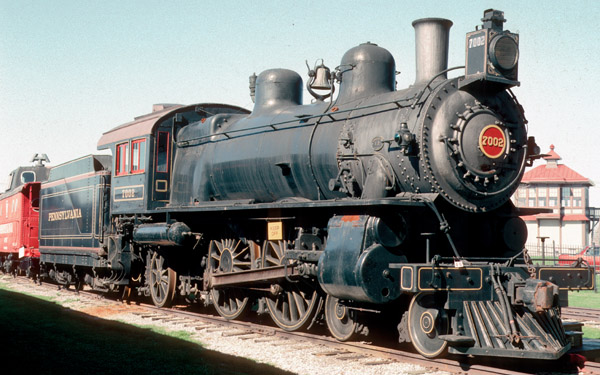
The World’s Fastest Locomotive
Class: E7s
Built: 1902 by Pennsylvania Railroad, Juniata Shops, Altoona, Pennsylvania
Retired: 1934 (original) 1939 (No. 8063)
Speed became a marketing tool as railroads competed for passenger business. The New York Central was the first to break the 100 mph barrier, but not long after, the Reading Company had four Atlantic-type locomotives equally capable. The Pennsylvania Railroad’s E2 and E3 class Atlantics quickly developed a reputation for being fast, dependable runners.
The E2 No. 7002 gained fame on June 12, 1905, when it reportedly set a ground speed record of 127.1 mph, making up time west of Crestline, Ohio. In 1939, the Pennsylvania Railroad prepared to send No. 7002 to the World’s Fair in New York, only to find it had been unceremoniously scrapped. The Pennsylvania Railroad chose another locomotive, No. 8063 as a “stand in” at the Fair. With no time to change its appearance, it debuted as No. 8063. In 1983, it was leased to the Strasburg Rail Road, where it operated until 1989.
Fun Fact: By the 1949 Chicago World’s Fair, the locomotive was shown off in all its glory as No 7002, under the banner of being the World’s Fastest Locomotive.
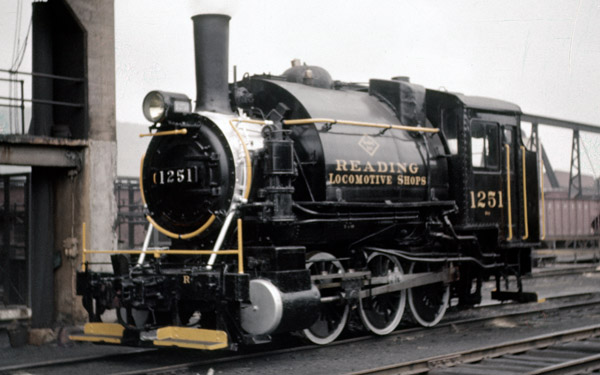
A Compact and Powerful Workhorse
Class: B4a
Built: 1918 by Philadelphia and Reading Company, Reading Shops, Reading, Pennsylvania
Retired: 1963
The compact and reliable No. 1251 served for 45 years in the Reading Locomotive Shops. Known as a roundhouse “goat,” the No. 1251 was an industrial switching engine used to move locomotives in and out of the shops. Since the Reading shops built more than 620 completely new locomotives and rebuilt hundreds of others, No. 1251 was kept busy for many years.
The saddle tank switcher was designed with the water tank and fuel bins on the locomotive itself, adding more weight for traction. Compact in size, these engines were perfect for work around industrial areas and shops.
Fun Fact: No. 1251 was the last standard-gauge steam locomotive in daily operation on a class one railroad in the United States
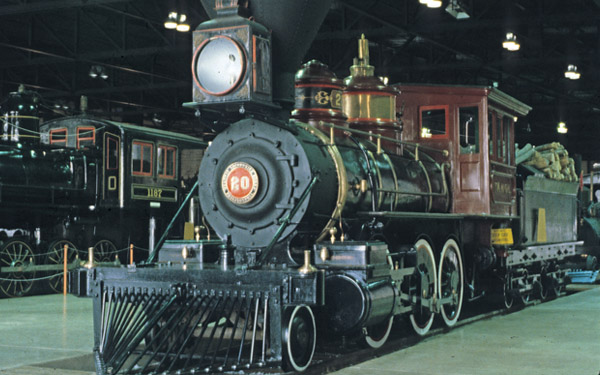
Built in Pennsylvania: Used in Nevada
Class: 8-28d Mogul
Built: 1875 by Burnham, Perry, Williams & Company, (Baldwin Locomotive Works), Philadelphia, Pennsylvania
Retired: c. 1944
The Baldwin Locomotive Works in Philadelphia led the world in locomotive production for half a century. With 1,445 employees in 1870, Baldwin was building hundreds of locomotives each year, including this one built for the Virginia and Truckee Railroad in Nevada, where it hauled silver ore and bullion from the mines of the Comstock Lode.
The ornately decorated “Tahoe” once featured brass trim, finished woodwork, gold leaf, and a bonnet style smokestack (an original feature that was restored) as part of the original Baldwin paint scheme, typical of the “Mogul” 2-6-0 locomotives of the 1870s. During its lifetime, No. 20’s fuel supply changed from wood (1875) to coal (1907) to oil (1911).
Fun Fact: In the 19 th century, Baldwin Locomotive Works built thousands of steam locomotives that were operated throughout the United States and around the world.

Built: 1883 by Baldwin Locomotive Works, Philadelphia, Pennsylvania
Retired: 1944
Olomana spent its life moving four-wheeled railcars piled high with cut sugar cane from the fields to the refinery. Because of its small size and relatively light-weight, it would be relatively easy to move on temporary tracks from one field to the next.
Since Olomana is a tank engine, it carries its fuel and water on the locomotive itself. The fuel, which was originally coal, was stored at the rear, and the water was carried in the U-shaped “saddle tank” that drapes over the boiler.
Fun Fact: Olomana arrived in California in the late 1940s after its purchase by Gerald Best. Best and, Disney animator, Ward Kimball restored and operated the locomotive on Kimball’s private railroad. A frequent visitor to the railroad was Kimball’s boss, Walt Disney, who occasionally operated the locomotive.
Cars – Passenger
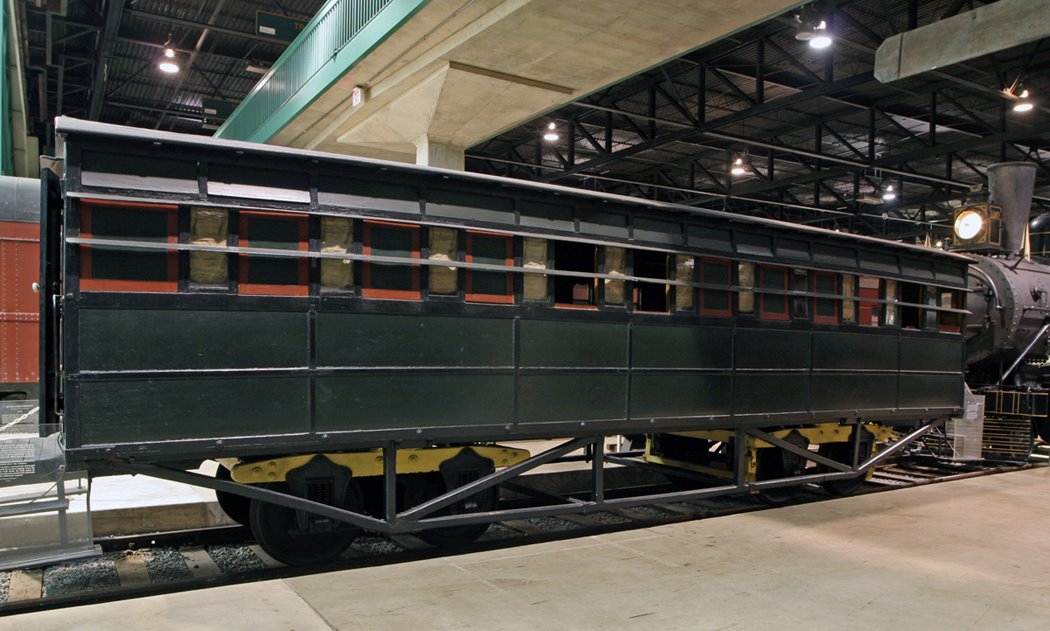
Birth of the Modern Passenger Car
Built: 1836 by Camden and Amboy Railroad, Bordentown, New Jersey
Retired: c. 1865
Treasured as the second oldest passenger car in America, the No. 3 coach is noteworthy for its swiveling four-wheel trucks, modern seating and center-aisle arrangement. Earlier cars resembled stagecoaches; this car has more seats –24 bench seats compared to 6 – arranged in two rows along the windows. The central corridor allowed the conductor to collect tickets on board while doors on either end sped up boarding and exit times and gave the conductor control of access to the car. These features created the basic design and function of the passenger car.
The No. 3 and its sister coach accompanied the John Bull and later its replica at various World’s Fairs and expositions throughout the first half of the 20 th century. It was donated to the Smithsonian Institution in 1960 before being placed on long-term loan to the Railroad Museum of Pennsylvania. It is the oldest surviving eight-wheel passenger coach in North America.
Fun Fact: After retirement, the car was sold to a farmer who used the body as a chicken coop. It was acquired and restored by the Pennsylvania Railroad for exhibition at the 1893 World’s Columbian Exposition in Chicago.
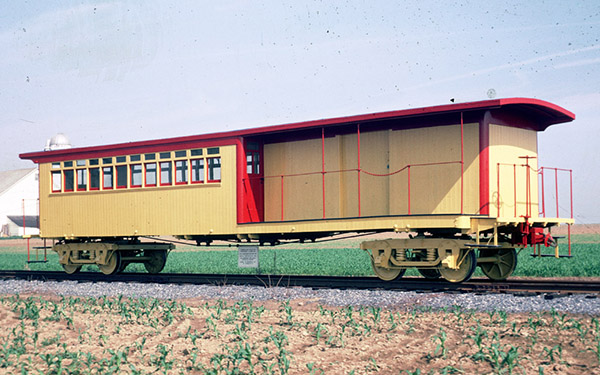
A Combination Baggage Car and Passenger Car
Built: 1855 by Cumberland Valley Railroad, Chambersburg, Pennsylvania
Retired: 1909
The Cumberland Valley was one of Pennsylvania’s earliest railroads, chartered in 1835. The line gained great importance during the Civil War, shuttling troops and supplies toward the front line in the South. This car may have played a role in that effort. It became part of the Pennsylvania Railroad’s “relic” collection and was displayed at numerous expositions and public events.
This car is a combination passenger coach and baggage car. It incorporates an unusual walkway alongside the baggage compartment, a feature that may have been added after it was built. There is also an extra baggage-room window along the gallery.
Fun Fact: This car is believed to be one of the oldest surviving wooden passenger cars in the United States.
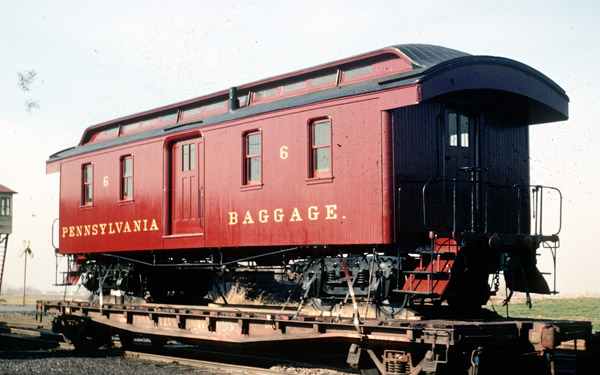
The Specialized Baggage Car
Built: 1882 by Pennsylvania Railroad, Altoona, Pennsylvania
From the earliest days of railroading, merchants recognized the appeal of using the fast passenger train schedules for shipping. As business flourished, the railroad developed specialized baggage cars to handle everything from passengers’ luggage to express parcels. An on-board baggage handler ensured that all baggage arrived safely at the proper station.
Baggage cars were usually grouped at the “head end” of the train immediately behind the locomotive, for safety, security, and ease of unloading. Once railroads began hauling valuable shipments, they installed bars in windows, strong locks on doors, and provided baggagemen with firearms for protection.
Fun Fact: Before it was restored for an appearance at the 1940 New York World’ Fair, the No 6 was stripped of its trucks and used as a storage shed and yard office in Wilmington, Delaware.
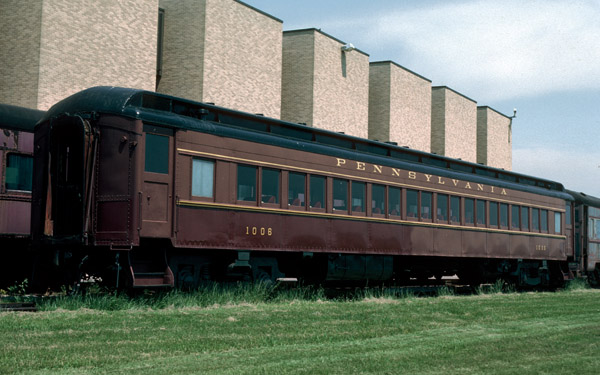
Steel Becomes the New Standard
Class: P70
Built: 1928 by Standard Steel Car Company, Hammond, Indiana
Retired: 1967
Steel cars became the new standard for safety and service, as well as durability and cost-effectiveness. The original steel cars followed the designs of earlier wooden coaches. Engineers quickly saw advantages in the new construction methods that made cars longer, lighter, long-lasting, and cheaper to build. The new cars could be modernized with lounges, observation sections, air conditioning, steam heat and rotating seats.
The Pennsylvania Railroad quickly set the standard for all-steel service, ordering passenger-baggage, baggage-mail, mail, and dining cars of similar construction. The Pennsylvania Railroad used several manufacturers to build a total fleet of over a thousand P-70 coaches.
Fun Fact: Railroads across the country followed the lead of the Pennsylvania Railroad, soon advertising all-steel service nationwide.
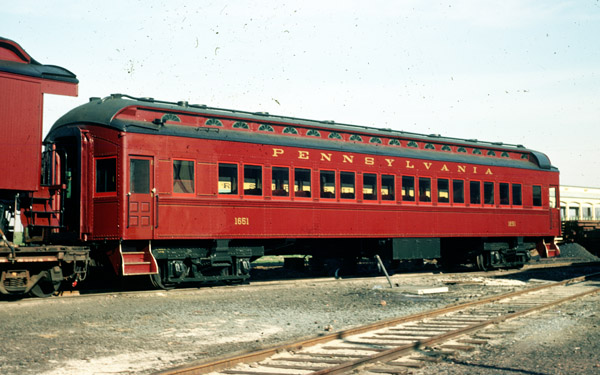
The New Model for Safety
Class: P58
Built: 1906 by Pennsylvania Railroad, Altoona, Pennsylvania
Retired: 1930
Prompted by the enormous safety hazards of coal-burning steam locomotives using the new Hudson River Tunnels, the Pennsylvania Railroad developed the first prototype of its new steel passenger cars. The No.1651 proved unsatisfactory as a genuinely “fireproof” car, because of the amount of combustible materials still present. As a result of this dissatisfaction, it was the only one of its kind ever built, though it paved the way for a new production model.
Although there were combustible materials still in the car, most were treated to resist flame. Steam heat replaced the coal-fired, pot-bellied stoves, and electric lights replaced oil lamps. To minimize the dangers of “telescoping,” the engineers had specially designed enclosed vestibules at each end of the car. For public comfort, the No. 1651 had both reversible and non-reversible seats, restrooms, and drinking water.
Fun Fact: Despite the enhanced safety, some passengers initially refused to ride the new steel cars for fear of lightning strikes.
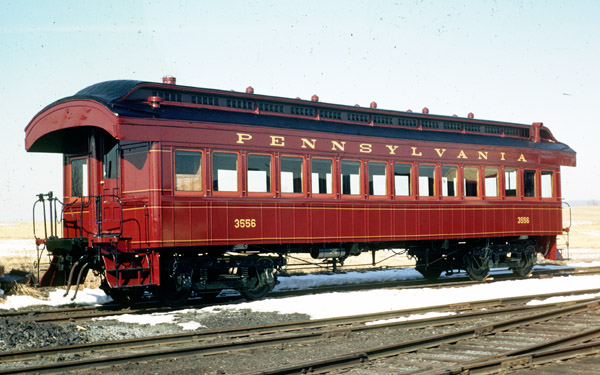
The Late 19 th Century Passenger Train: Elegant and Dangerous
Built: 1886 by Pennsylvania Railroad, Altoona, Pennsylvania
Retired: 1915
The late 19 th century passenger train featured many elegant details: stained glass clerestory windows, golden oak paneling, silver-plated chandeliers, and rich, red plush seat cushions. No. 3556 also had toilet facilities and a brass spigot connected to a water tank for drinking water.
Despite their opulence, however, these wooden cars were always a safety hazard. The impact from train collisions could cause an engine to “telescope” another coach from the rear, crushing passengers and upsetting hot stoves, setting the cars ablaze. The development of steel body passenger cars in the early 20 th century made train travel much safer, and the No, 3556 was replaced by an all-steel passenger coach.
Fun Fact: In the days before coolers and bottled water, passengers could refresh themselves by sharing a common drinking cup onboard.
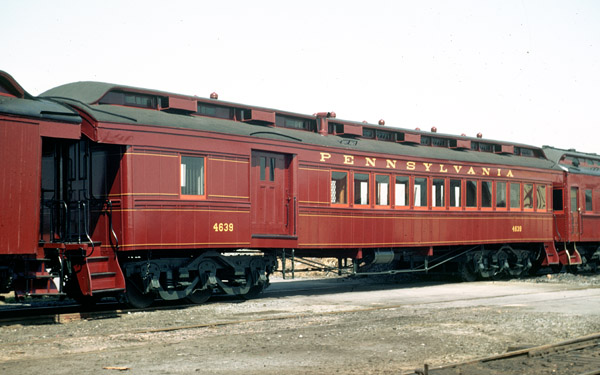
The Versatile Combine
Built: 1895 by Pennsylvania Railroad, Altoona, Pennsylvania
Whether for business or pleasure, cross-country or cross-county, the choice for travel was the train. Comforts and convenience could vary widely on passenger trains. One of the most accommodating cars was the combine, a combination of both a passenger coach and a baggage compartment. These cars were a common feature on Pennsylvania’s passenger trains from the luxurious Pennsylvania Special to the tiniest of locals. The baggage compartment also had pigeonholes for small express packages, and at times, it would carry mail.
Within ten years of building the No, 4639, the Pennsylvania Railroad abandoned wooden passenger car construction in favor of stronger and safer steel.
Fun Fact: In some cases, the car was put at the end of mixed freight/passenger trains and used to carry passengers in addition to the rear-end train crew.
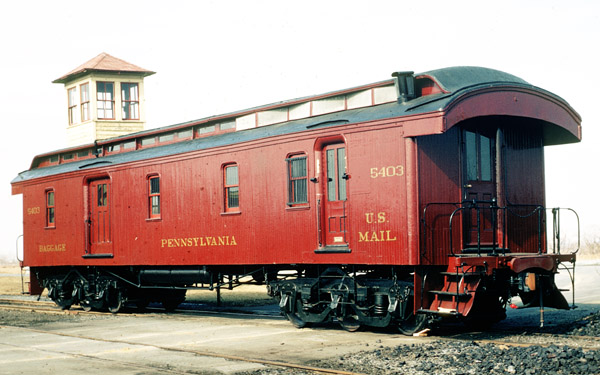
Mail by Rail
Built: 1893 by Pennsylvania Railroad, Altoona, Pennsylvania
Railroads began delivering U.S mail in their earliest days, initially hauling mail in bulk. In 1864, postal clerk George Armstrong initiated the idea of sorting the mail in transit, and the Railway Post Office concept caught on quickly. Railroad postal workers picked up the mail at station stops or grabbed it en route from a mail crane with a long metal hook. They sorted it into racks and pigeonholes in the car for either direct delivery or transfer to another train or some other mode of transportation.
In 1871, the Railway Mail Service employed 650 clerks in Railway Post Offices traveling more than 12 million miles a year. By the 1950s, air travel and automated sorting machines began moving mail faster than the Railway Post Office. The last run of the Railway Post Office was in 1977; although, bulk mail was delivered by Amtrak until 2004.
Fun Fact: This car is the only known railway postal car lighted by the Frost Carburetter System of Car Lighting, which ran on gasoline and lighted each car independently with a “vastly enlarged volume of light.”
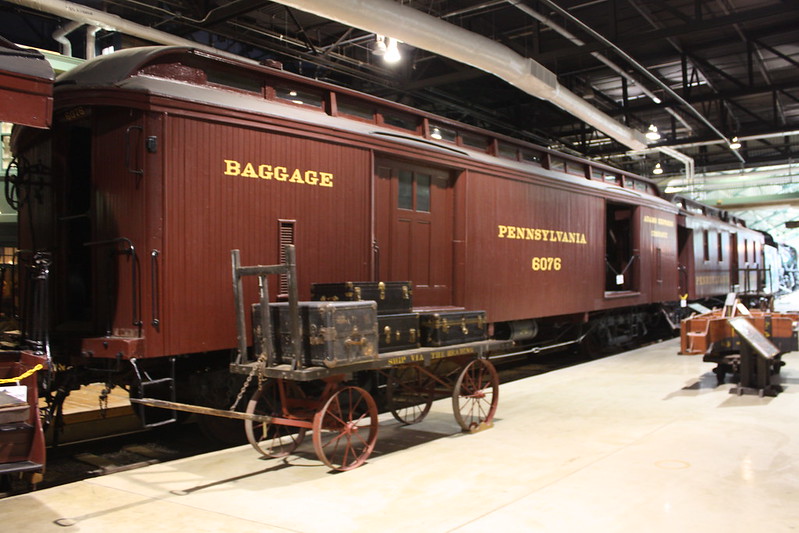
The Express Car
Built: 1899 by Pennsylvania Railroad, Philadelphia, Pennsylvania
Retired: c. 1939
Mail and express shipments made up some of the railroad’s most lucrative business. The railroad companies developed the express car to handle high value shipments, adding heavier doors and locks and fewer and smaller barred windows. The railroad leased this car to the Adams Express Company, a forerunner of the Railway Express Agency, and later FedEx or UPS
Adams Express Company further modified No. 6076, adding small ventilators, floor drains, and a gutter running down the center of the interior. These changes indicate that the car saw service as a market car, hauling produce. Sometime after 1919, No. 6076 became a tool-and-block car used for maintenance-of-way service.
Fun Fact: To increase security for the express shipments, this car’s side windows were replaced with air vents.
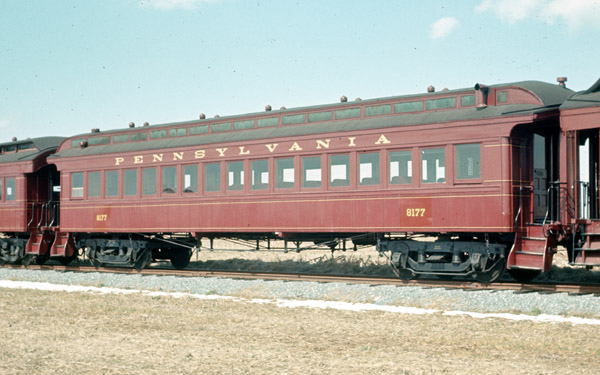
Steps Toward Greater Safety
Built: 1896 by Pennsylvania Railroad, Columbus, Ohio
As the 19 th century grew to a close, railroads were increasingly under attack by lawmakers and the traveling public, demanding greater safety. The No. 8177, though still primarily constructed of wood, added several safety appliances. These included the automatic coupler and air brake, now mandated by federal law.
An early semi-enclosed vestibule provided protection from the elements and the rocking of the train as passengers and crewmembers crossed between cars. A ladies’ lounge area and separate bathrooms at opposite ends of the car for men and women also provided privacy. These improvements provided a smoother and more comfortable ride as well. As with many other wooden passenger cars, No. 8177 was transferred to maintenance-of-way service in the 1910s.
Fun Fact: The No. 8177 was restored for service in 1982 on the Strasburg Rail Road and was last used in 1987 as part of the 75 th anniversary of the Pennsylvania Railroad’s Broadway Limited.
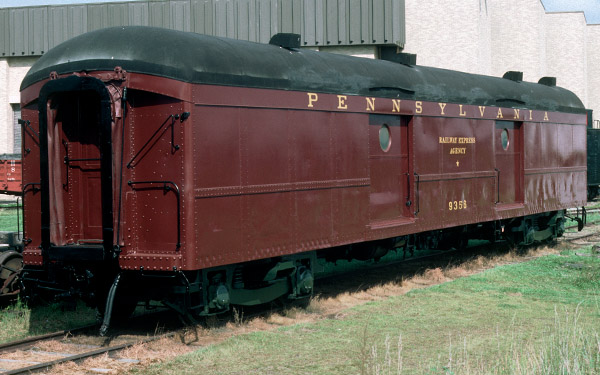
The All-Important Baggage Car
Class: B60b
Built: 1928 by St. Louis Car Company, St. Louis, Missouri
Retired: 1985
Baggage cars had a variety of uses on American railroads. The staff included a baggage clerk and his staff of handlers to handle shipping crates, mail bags, express packages, steamer trunks, and parcels. They hauled the load on a motorized wagon to the loading platform where strong backs heft the varied cargo onto the car.
In some cars, such as the No. 9356, the work was carried out en route, requiring a work desk, pigeonhole sorting racks, steam heat, electric lighting, water cooler, safe, and a restroom for the agent.
Fun Fact: The 6-inch gold star on the side over the number indicated that this car was equipped with a toilet and locker for a messenger or baggageman’s use.
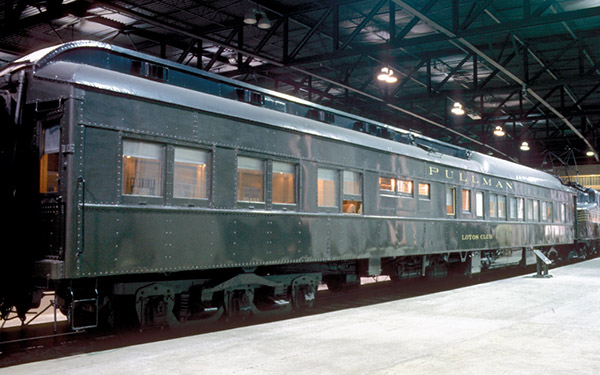
Click Here for Virtual Tours of the Sleeping Berth , Seats , Kitchen , Men’s Room , Women’s Room & Dining Area
Built: 1913 by Pullman Company, Pullman, Illinois
The Lotos Club, named after a fashionable men’s literary club in New York City, is typical of the all-steel sleeping and lounge accommodations of the heyday of railroad travel. These cars came in many different dining and sleeping arrangements and ran on different railroads. They were noted both for comfort and the fine service of the Pullman Porters, African-American men hired by the Pullman Company to serve as sleeping car porters.
The club-type cars were placed wherever and whenever they were needed, often offered for use for private parties. Family and friends of Elmer Layden, one of the famed “Four Horsemen” of Notre Dame, leased this car for its final run from Chicago to South Bend for a Notre Dame football game.
Fun Fact: In the 1920s, the Pullman Company was the largest “hotel operator” in the country, sleeping 100,000 guests every night in nearly 10,000 cars.
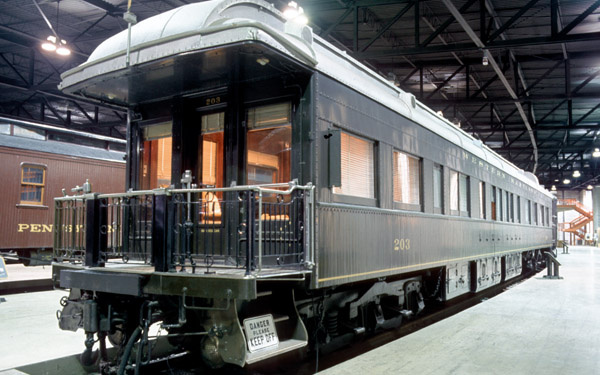
The Exclusive Business Car
Built: 1914 by Pullman Company, Pullman, Illinois
Retired: early 1960s
The business car was designed as a mobile office for high-ranking railroad executives. No. 203 was built for the use of Carl R. Gray (1867-1939), president of the Western Maryland Railroad and other senior officers. It included accommodations for up to four executives, with a dining room, kitchen, pantry, crew quarters, lounge and two master bedrooms, each with a shower. The interior was remodeled in 1954 by Dorothy Draper, decorator of hotel and automobile interiors.
Business cars were used to entertain clients, prospective shippers, customers, and business partners, as well as the occasional perk of a private excursion. It was also used to observe the condition of the track and the performance of the train crew. An onboard staff consisted of a train secretary, steward, and chef. The Rockefeller family were frequent guests, and were said to have filled the observation room with a large sandbox when their young grandchildren were along.
Fun Fact: Carl Gray specified sheathing that looked like wood on the exterior to resemble the business cars of the larger railroads.
Cars – Freight

Early Tank Car
Built: 1939 by American Car and Foundry Company, Milton, Pennsylvania
Retired: c. 1970
Pennsylvania, the state with the first oil well, also built the railroad tank car. The early design had two large vertical vats on a flat car. It evolved into horizontal iron and, later, steel tanks with one or more domes to facilitate loading and allow for expansion of liquid during travel.
The American Car and Foundry Company, which had its origins in Milton, Pennsylvania, became one of the nation’s largest builders of tank cars. This car consists of three separate compartments, each equipped with its own dome and unloading port. It could haul multiple cargoes on a single trip and could also be loaded and unloaded quickly. Heating coils kept its lading fluid in colder months.
Fun Fact: Tank cars had to travel either at full capacity or empty, since the movement of liquid inside the tank could derail the car.
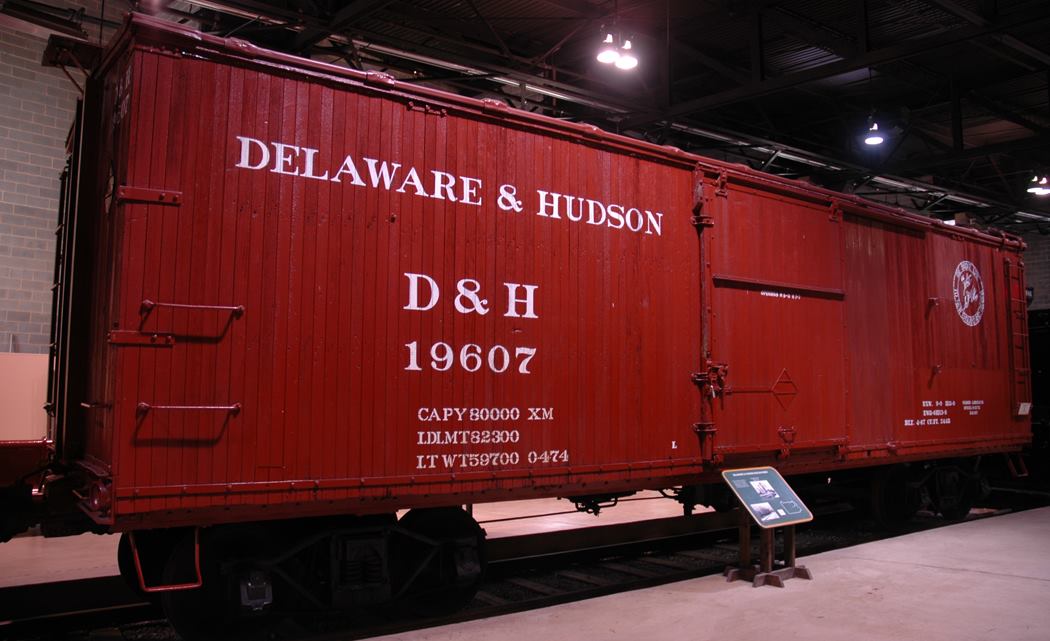
The “Composite” Boxcar
Built: 1907 by American Car and Foundry Company, Berwick, PA
Boxcar No, 19607 uses both wood and steel in its construction. The tongue-and-groove wood sheathing covers a steel frame. The roof of the car is also made of steel for increased durability.
Steel frames were standard by 1940, providing strength and sturdiness. Wood, however, was less expensive and easily replaced.
Fun Fact: Before retirement, No, 19607 was used as a tool car in a work train.
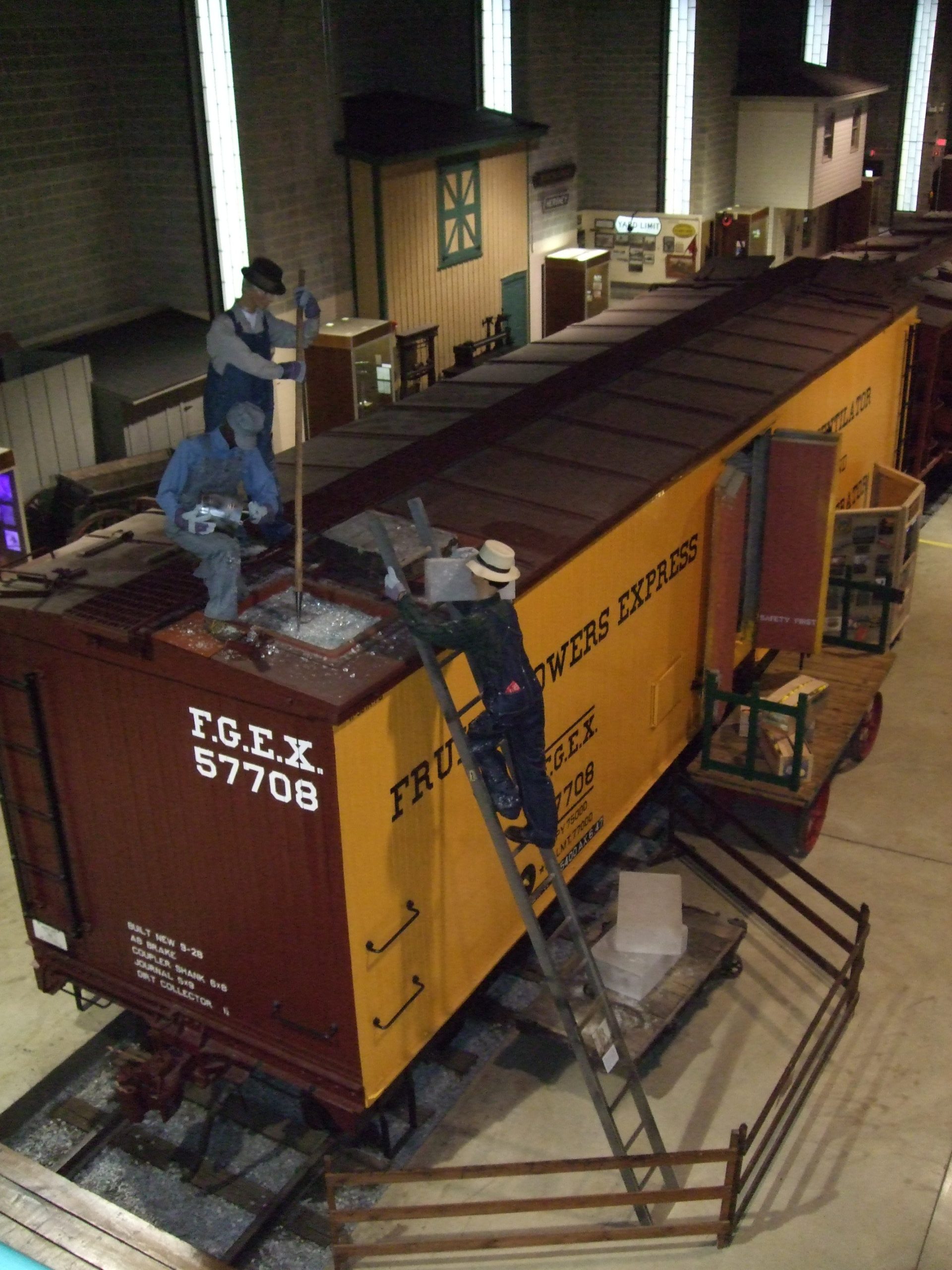
Keeping Produce Cold: A Diet Revolution
Built: 1928 by Fruit Growers Express Company, Alexandria, Virginia
Retired: c. 1975
Imagine the wonder of making fresh fruits available year-round! Before the advent of the “reefer” (refrigerated car) Americans were limited to foods that could be grown locally. This new transportation technology not only kept produce fresh but also revolutionized the meat-packing and brewing industries by centralizing production.
Before mechanical refrigeration, ice was the key. Workers loaded blocks of ice through roof-top hatches. As the ice melted, the water drained through chutes in the corners. Insulated walls, three inches thick, and a built-in circulating system driven by the car’s wheels cycled the cool air from floor to ceiling.
Fun Fact: Workers added salt to the ice to make it melt faster thus making the ice cooler.
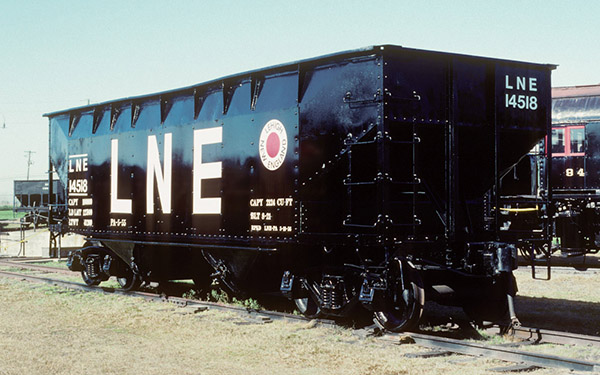
A Typical Coal Hopper
Built: 1952 by American Car and Foundry Company, Huntington, West Virginia
From the 1920s to the 1950s, hopper cars like this one carried most coal, stone and sand. The typical car was 34 feet long, had two hopper bays on the floor, and held 50 tons of coal. This car has its structural supports on the inside of the steel sheathing, allowing for slightly greater capacity.
The Lehigh & New England Railroad was one of many railroads built to carry the anthracite coal reserves of eastern Pennsylvania with numerous branches to mines and quarries. The railroad ended its operations in 1961 after the use of anthracite declined.
Fun Fact: This car was later used at Pennsylvania Power & Light Company’s Hauto Power Plant to transport coal used to generate electricity.
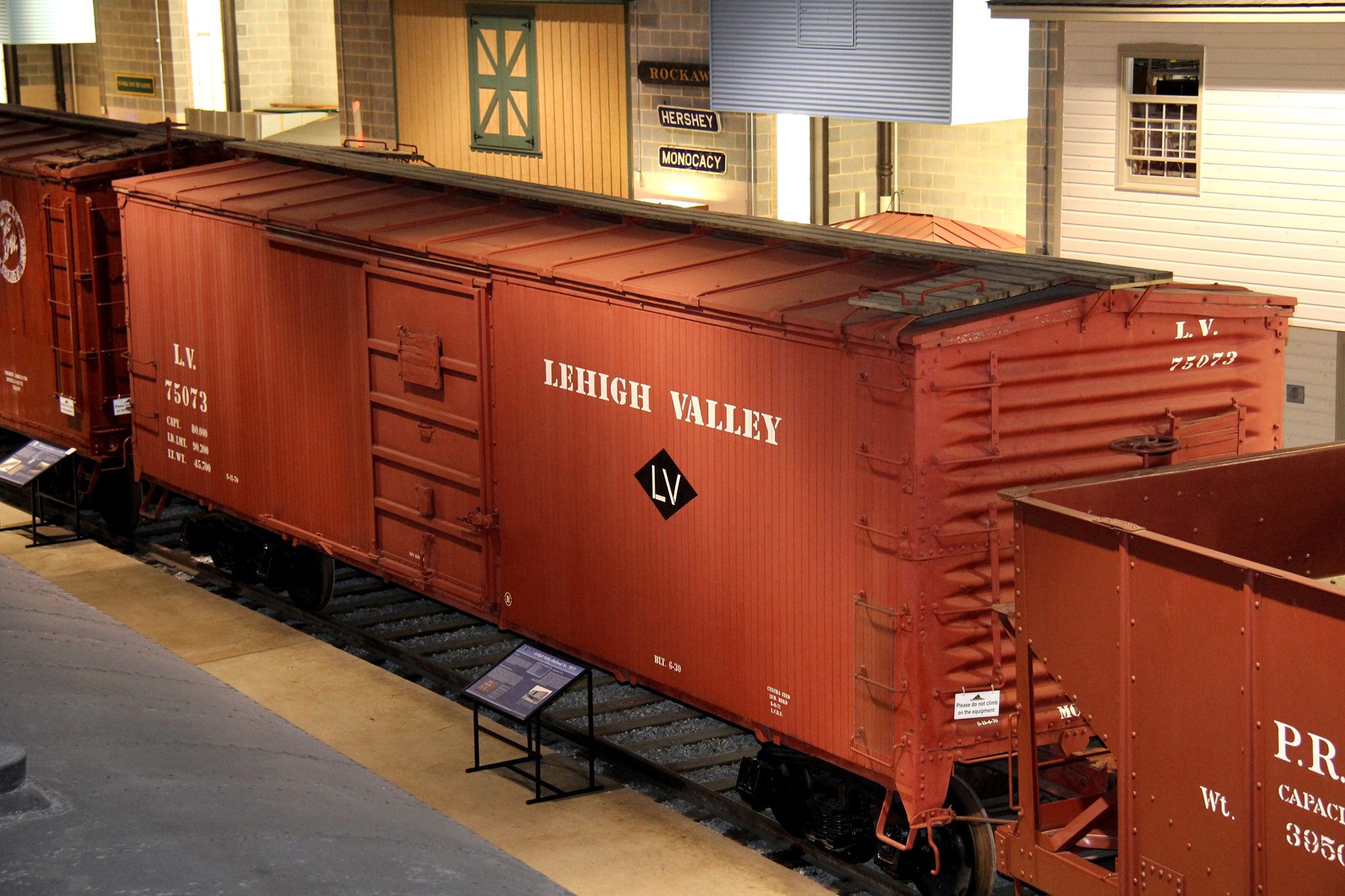
The Versatile Boxcar
Built: 1935 by Lehigh Valley Railroad, Sayre, Pennsylvania
Retired: c. 1970
To many, the boxcar is the most recognizable freight car – and the most versatile. It might be found carrying lumber, paper products, all kinds of manufactured products, or even foodstuffs. In the early 20 th century, car builders developed standard designs and construction methods for boxcars. During the depression era, workers recycled older materials, sometimes building longer cars with greater capacity.
The numbers and abbreviations on the sides of the cars help railroad crews to identify and track rail cars. These markings include: the car number, weight data as well as build and service information, all in a language well known to railroad workers.
Fun Fact: This car was once equipped with loading hatches on the roof for hauling grain.
The PS-2 Covered Hopper
Class: H34a
Built : 1955 by Pennsylvania Railroad, Altoona, Pennsylvania
Retired : c. 1999
The Pullman Standard Company developed common design and construction techniques that standardized rail cars of all kinds. The covered hopper carried bulk commodities of cement, sand and other dry aggregates in hoppers that could be found on railroads large and small.
The Pennsylvania Railroad Company ordered 400 Pullman Standard cars as kits and sent them to their own large shop complexes for assembly. Pullman Standard built an additional 300 cars for the Pennsylvania in their own Butler, Pennsylvania facility.
Fun Fact: The car was marked with a yellow “S” by Penn Central to denote the fact that it was used by the company’s “ S” tores department, which used it to haul locomotive sand to terminals around the system.
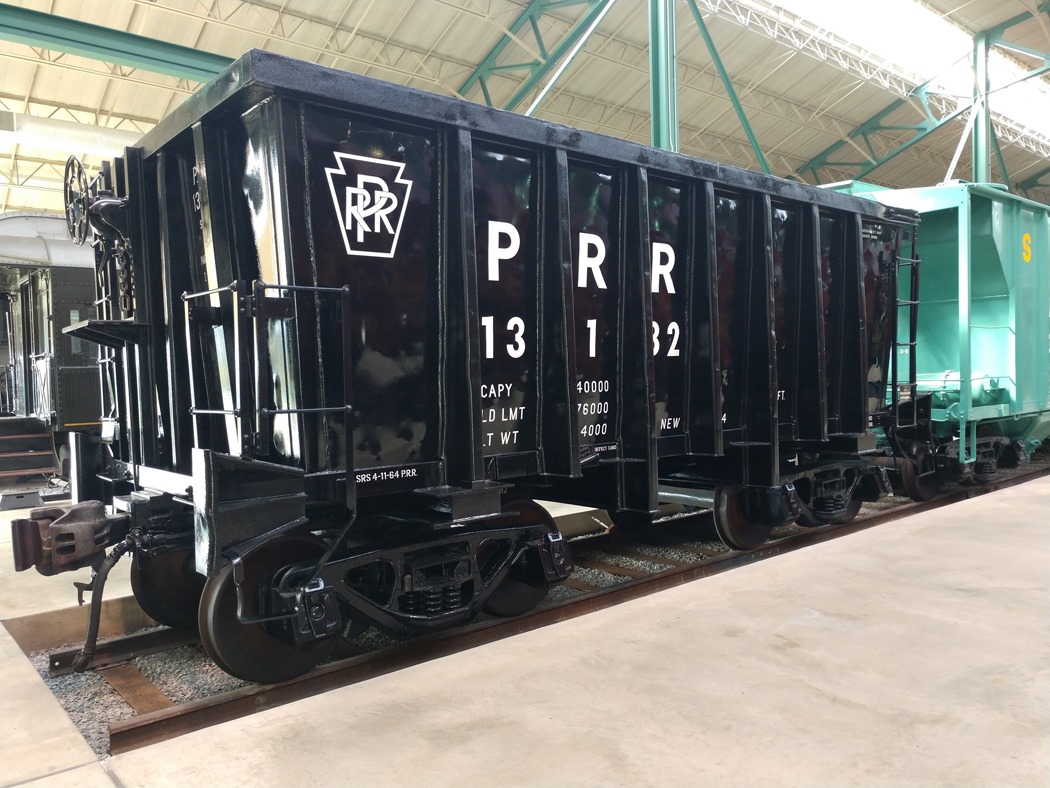
The Ore Jenny
Class: G39a
Built: 1964 by Pennsylvania Railroad, Hollidaysburg, Pennsylvania
Retired: c. 1998
Iron ore, essential in steel production, is one of the heaviest products to be shipped by rail. Specialized cars, known as “jennies,” were built to replace open hoppers in transporting this commodity. The smaller jenny was cheaper to build and maintain, as well as lighter and more efficient to operate. Jennies were unloaded by rotating upside down in a rotary dumper.
In winter, railroads needed to find solutions to deal with the tendency for ore to freeze inside the cars. They tried coating the exterior of the cars with foam to prevent freezing and inserting steam pipes into pockets to thaw frozen loads.
Fun Fact: Despite its small size, this ore jenny could carry up to 70 tons of iron ore.

Insulated Boxcars
Class: X54
Built: 1960 by Pennsylvania Railroad, Hollidaysburg, Pennsylvania
Retired: c.1995
Though they all share a common design, boxcars come in a wide assortment of sizes and adaptations to haul a variety of goods. This boxcar is designed to carry perishable foodstuffs. While meats, dairy, and produce products need extreme temperature control, some foods, such as canned goods, require more modest protection. These cars feature a heavy layer of insulation, tight-sealing doors, and a cushioned underframe.
These small cars are only 40 feet in length inside. They may have been specifically designed to meet the needs of the shippers’ loading doors.
Fun Fact: X54’s were equipped with the Evans Quick Loader, a device consisting of two gates mounted on the ceiling of the car which could be brought down like garage doors and positioned to secure the car’s contents in place.
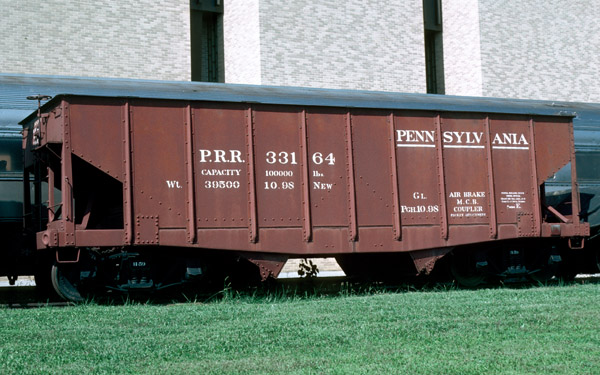
The Arrival of the Steel Hopper
Built: 1898 by Schoen Pressed Steel Company, McKees Rocks, Pennsylvania
Retired : c.1939
Railroads began experimenting with steel cars in the late 19 th century, searching for ways to increase payload and reduce maintenance costs. The first problem to be solved was how to reduce the weight of steel. Innovations with pressed steel forms lightened the cars while still maintaining structural integrity. A steel car only 2 tons more than a wooden car increased capacity by 10 tons!
Larger and stronger cars soon led to larger locomotives, longer trains, and heavier rail and bridges. The Pennsylvania Railroad quickly led the way in construction and ownership of the new all-steel hoppers.
Fun Fact: This hopper car, No.33164, is the earliest all-steel Pennsylvania Railroad freight car in existence.
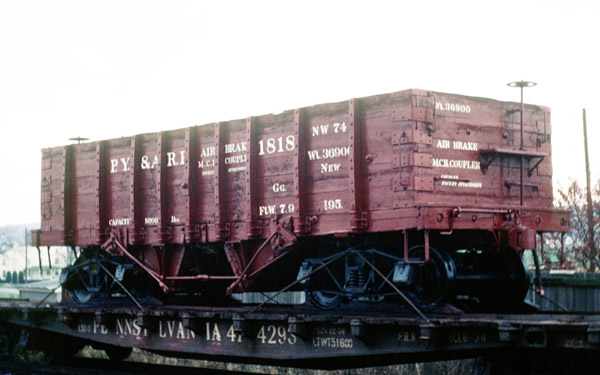
A Pioneer Hopper
Built: 1895 by Barney and Smith Car Company, Dayton, Ohio
Retired: c.1939
The Pittsburgh, Youngstown and Ashtabula Railroad connected the steel mills of Pittsburgh with the shores of Lake Erie. Their primary commodity was coal. Early coal hoppers were made mostly of wood, lacking the capacity and endurance of the steel hoppers to come.
The prototype for this car was known as the “Potter Gondola Car,” named after Pennsylvania Railroad Superintendent, G.L. Potter. It features sloped end sheets and discharge doors that assist unloading with the help of gravity. This was a first step in the evolution of hopper cars from gondolas.
Fun Fact: This is the oldest Pennsylvania Railroad freight car in existence.
Cars – Other
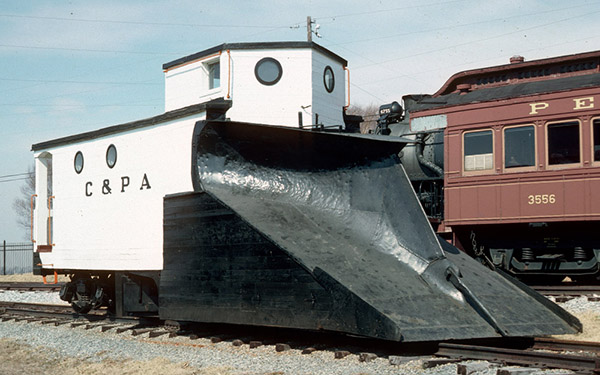
Clearing the Rails
Built: 1897 by Ensign Manufacturing Company, Huntington, West Virginia to Russell Snow Plow Company specifications
Retired: 1945
Heavy snowfall and icy weather could bring a railroad to a halt, disrupting both freight and passenger service. Snow plows were the railroad’s first line of defense in a raging snowstorm. Early wedge plows attached to engines were considered dangerous if it were to hit a fallen tree or hidden debris on the track. The design of this Russell snowplow allowed for greater visibility, giving a crew member perched in the pilot house the ability to see obstructions ahead, and increased strength with its heavy, timber-frame construction.
The Coudersport and Port Allegany Railroad snowplow was designed for single track use and includes a “flanger” underneath that removed snow and ice from the insides of the rails. The flanger could be raised or lowered to avoid damaging switches and grade crossings.
Fun Fact: This snowplow, designed to clear the track safely, may be the oldest snowplow still in existence.

Built: 1913 by Pennsylvania Railroad, Altoona, Pennsylvania
Retired: 1954
Introduced in 1903, the ND class cabin or caboose was the first to use steel in its under frame. Previous cabooses used only wood. Although only used in the under frame, the use of steel added strength to the car and gave the crew some measure of protection if struck from the rear.
Cabooses were designed so that the crew could observe and protect the train and its contents from damage. They were also used as rolling offices for freight conductors and as quarters for the crew. Since cabooses were only intended for the crew and not for the movement of goods, they were considered non-revenue equipment, which meant they made the railroad no money. For this reason, railroads were slow to adopt steel in their construction.
Fun Fact: The steel under frame was reportedly designed to withstand the stresses of two H6 class steam locomotives (the large freight locomotives of the era) pushing behind the caboose.

The Bobber Caboose: An Office on Wheels
Built: c. 1890 by Lehigh Valley Railroad, Packerton, Pennsylvania
Retired: c. 1937
The caboose served as the conductor’s office. Here he kept track of the train’s paperwork, including its freight shipments. The car also provided accommodations for long journeys and nights away from home. The conductor often shared this office with a brakeman who assisted in throwing switches, coupling cars and protecting the end of the train.
With a short, rigid, four-wheeled truck and un-cushioned couplers, this type of caboose earned the nickname “bobber,” referring to its rough ride. Fortunately, “bobbers” were usually limited to slower and shorter branch line runs.
Fun Fact: After its retirement, this caboose, stripped of its wheels, became a watchman’s shanty, a storage shed, and finally a playhouse for kids known as “Aunt Clara’s Caboose.’

A Popular Redesign
Class: N5c
Built: 1942 by Pennsylvania Railroad, Altoona, Pennsylvania
World War II put great stress on America’s railroad with the need to move more freight and passengers than ever before. With the entire economy turned toward wartime production, railroads had to use readily available materials to build new rolling stock. This car provides a clear example with its four porthole windows on each side, making use of glass manufactured for battleships.
This caboose outlived the Pennsylvania Railroad and would end its service, along with most cabooses during the 1980s and 1990s. Cabooses were replaced by an End of Train device (EOT), which was attached to the last car of the train. This device flashed a red light, marking the rear of the train, and sent critical train operating information to the crew. This light-weight and inexpensive device eliminated the expense of manning and maintaining a heavy car, which made the railroad no money.
Fun Fact: When train crews were assigned to a particular caboose, many added their own décor, personal comforts, and even pin-up art.
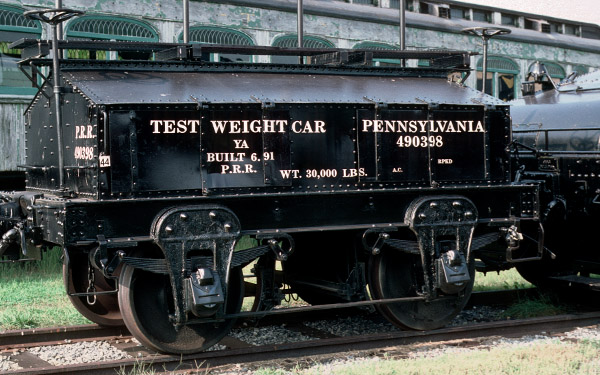
A Car to Test the Scales
Built: 1891 by Pennsylvania Railroad, Altoona, Pennsylvania
Retired: 1989
Because railroads often billed clients on the tonnage of goods handled, it was necessary to have accurate scales built on special sidings. Scales needed to be calibrated on a regular basis. Specially-designed cars were built to maintain a fixed weight. They were built of metal to avoid splintering and absorption of humidity. Unnecessary shelves and ridges were eliminated, and even air brakes were omitted to avoid variance in weight.
Once weighed in on a master scale, the maintainers sealed and locked the car’s compartments. It was then ready to serve as a test car to assure the accuracy of the scales. The sound construction and regular maintenance led to the car’s unusually long service life.
Fun Fact: When retired, this scale test car was the oldest car in continuous service on a Class 1 railroad in the United States.

The Instruction Car
Built: 1910 by Pennsylvania Railroad, Altoona, Pennsylvania
Rebuild date: 1928
Retired: 1966
One of the most critical components on any train is its brake system. An employee’s knowledge of the proper use and maintenance of these complex systems could mean the difference between life and death. Consequently, railroads required employees to complete training and exams on a two-year schedule. To reach the thousands of employees across the Northeast, the railroad sent the instructor and the classroom to the students.
In 1928 The Pennsylvania Railroad rebuilt a former Railway Post Office into Instruction Car No. 492445. The interior of the car includes an instructor’s office and walls lined with cutaways and working examples of each type of brake system in use on the railroad. The car’s restoration is one of the most thorough and historically documented projects at any railroad Museum to date.
Fun Fact: This traveling classroom was once outfitted to simulate a fifty car freight train, helping to keep railroad employees system-wide up-to-date on air brakes, saving time, money, and ultimately lives, as the result of regular, hands-on training.
Outdoor Yard
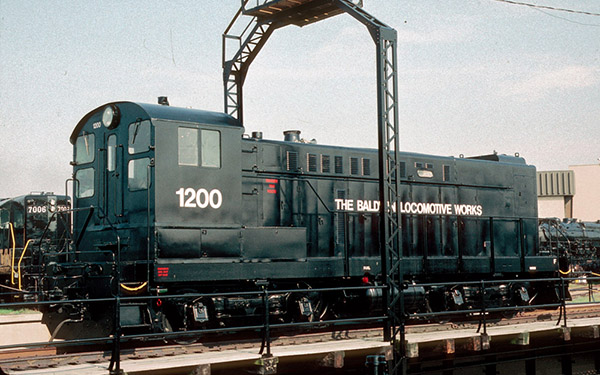
Built: 1951 by Baldwin Locomotive Works, Philadelphia, PA
This Baldwin S-12 Switcher was the seventh of an order of 12 locomotives originally assigned to the US Navy, ID No.65-00369, and the Marietta Transportation Depot at Marietta, PA. Later it would be assigned to the Navy Ordinance Depot in East Earl, NJ; where it came to the Museum in 1991.

Built: 1951 by Budd Company, Philadelphia, PA
Retired: 1981
The RDC was first conceived during the summer of 1948, and was developed in response to a plea by the New York, Susquhanna & Western Railroad. They sought to replace their worn-out fleet of 1930-era gasoline powered passenger cars with new equipment. The Budd Company took up the challenge and ultimately succeeded in building a car that was both aesthetically pleasing and economical. Luckily the RDC had mass appeal and was sold to 25 North American Railroads and others across the world with some still in service today.
Lehigh Valley No.40 and its siblings were delivered to the Lehigh Valley Railroad in August 1951 for service on the 26.4 mile branch line between the Hazleton and Lehighton on the mainline. The last service this piece had was on SEPTA’s Fox Chase line ending in 1981. The only exception to this retirement was an experimental run on the Strasburg RR in 1988.
Fun Fact: One RDC for the New York Central was outfitted with a jet engine and attained speeds of up to 184 mph.
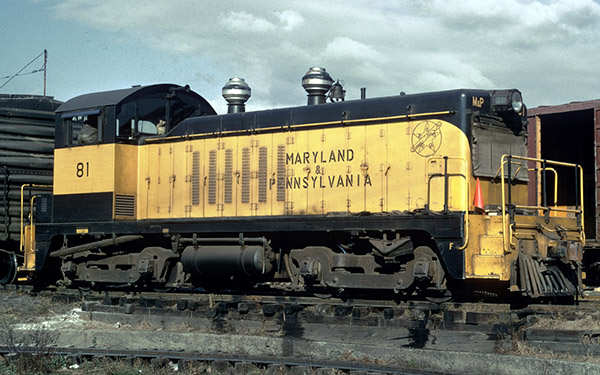
Built: 1946 by EMD, La Grange, Il
Retired: 1997
Maryland & Pennsylvania for the most part was a very active short line that operated between York, PA and Baltimore, MD. MPA ended up being more progressive than most of the larger railroads with their adoption of 3 new diesels in 1946, No.81 being among them.
No.81 worked switching duties in the yard and branchline for MPA faitfully until it was leased and sold to PH Glatfelter Paper Company in the 1980s where it was used at their Spring Grove, PA plant. Glatfelter donated the locomotive to the Railroad Museum in 1997.
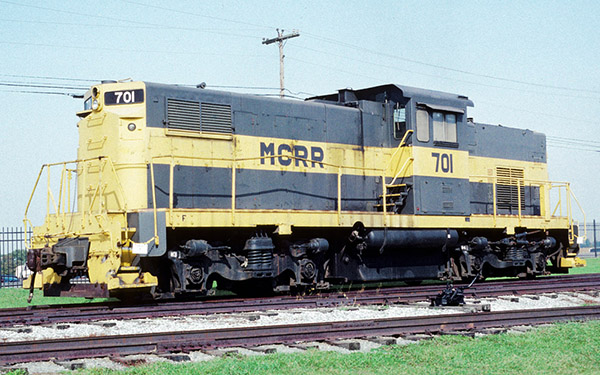
Built: 1968 by American Locomotive Company (ALCO), Schenectady, NY
Monongahela Connecting (MCRR) was an intra-plant railroad serving two large steel complexes for Jones & Laughlin that crowded both sides of the Monongahela River in Pittsburgh, PA. Their locomotives dealt in the movement of coal for coke ovens, taconite pellets, limestone for blast furnaces, and molten iron, among other industrial tasks.
MCRR No.701 was one of 26 C415’s built by ALCO at the time and one of thirty diesels MCRR owned. Later in life MCRR No.701 was spared the scrapper as it was stored away on a sister railroad Alquippa and Southern (ALQS) where it was purchased by the Friends of the RRMP in 1992 for scrap price.
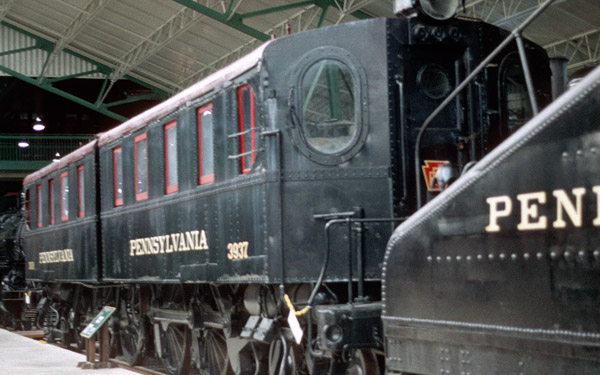
Model: DD-1
Built: 1911 by PRR Juniata Shops & Westinghouse Elec.
Retired: 1968
1910 ushered in an era of great expansion on the PRR with one of their largest projects being the opening of Pennsylvania Station on Manhattan Island. Tunnels were dug under the Hudson and East Rivers to connect the station to PRR mainlines. With these new underground tunnels, the amount of smoke produced by steam engines made their use off limits in the tunnels.
This meant a new locomotive was needed; so the electrics entered to fill the need for a smokeless mover through these tunnels. Through a joint project PRR and Westinghouse developed what would be the DD-1’s that got their power via a 3rd rail running parallel to the standard tracks. Despite having two road numbers the engine ran as one locomotive. DD-1 3936-3937 ran into the Penn Central Period and would finally be retired after 57 years of service in 1968.
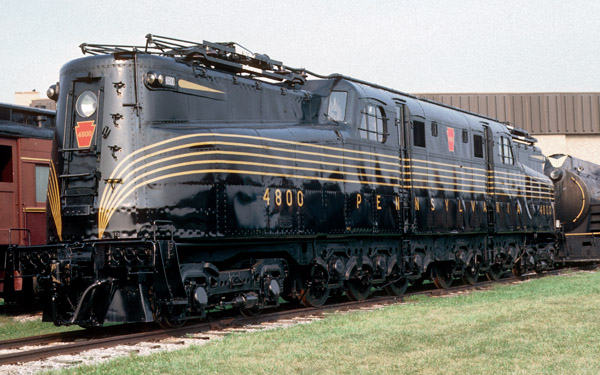
Built: 1934 by Baldwin/General Electric
The much talked about GG-1 was the result of a desire to have a reliable, fast, powerful, and numerous other requirements all in one electric locomotive package. In the end the final product proved to be better than anyone including PRR could have hoped for. Two separate electrics were ordered initially before a decision was made on which electric to go with. One set was ordered to be built by Baldwin with GE components that was essentially two 4-6-0’s articulated back to back, the class GG-1. Baldwin and Westninghouse built the other set equivalent to a 4-8-4 locomotive on a rigid frame, the class R1. The former was the the clear choice after some trials and the GG-1 was officially adopted by the PRR.
The first of PRR GG-1’s No.4800 has the distinction of being not just the first GG-1 built, but also being the only one to have a riveted body instead of welded body. 4800 was given the name “Old Rivets” affectionately and served until almost 1980.
Fun Fact: GG-1’s as a locomotive class were the longest serving of any locomotive class whether it be steam, electric, or diesel in the U.S. and abroad.
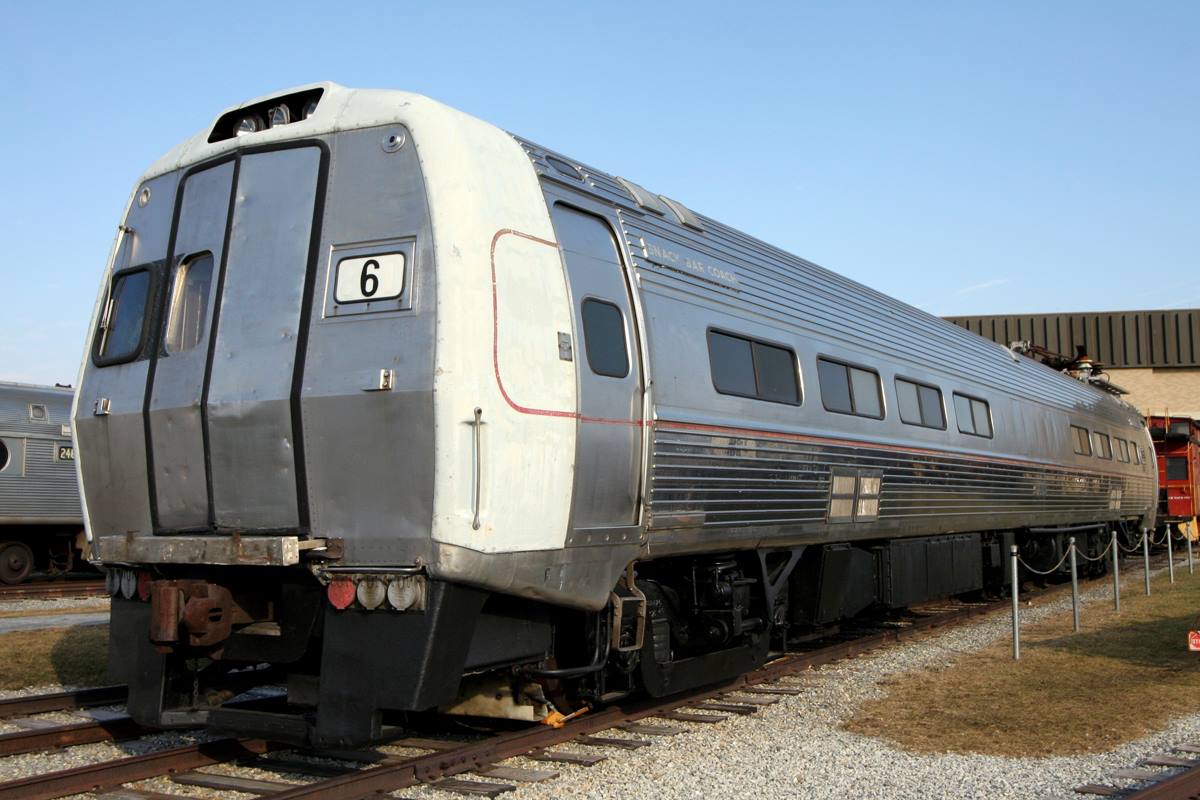
Built: 1968 by Budd/General Electric and Westinghouse
Metroliner’s were born in the 1960s out of the realization that highways and airways between Washington, New York, and Boston would soon become saturated with traffic and that passenger rail was viewed as the only viable solution. There of course was much more behind the inspiration for the Metroliner than just that as politics were said to of played a part as well. Originally set to debut with the PRR, development too so long that it wouldn’t see use until Penn Central and the early years of Amtrak.
Metroliner Snack-Coach No.860 was a self-propelled passenger car used in train sets made up of similar cars. It had 30 seats on either end with the snack bar in the middle. (Most were later converted to vending machines.) The Metroliner ended up being very popular with passengers for its short lived life despite a myriad of issues the car may have had.

Built: 1975 by General Electric in Erie, PA
In 1975 Amtrak was a young experiment of an entity and they needed to acquire new electric locomotives to replace their fleet of ageing GG-1s. General Electric was making the E60C electric locomotive currently but it was only being used for industrial coal operations over limited mileage at the time thanks to its durable build and 6,000 horsepower. So Amtrak decided to go with the workhorse thanks to its affordable price versus other options for passenger service. The E60s were essentially retired by the end of the 20th Century for the more ideal AEM-7. However they saw a brief resurgence after the 9/11/01 terrorist attacks. With many forced to switch to trains after the jets were grounded, E60s were brought out to pull longer and heavier passenger trains that otherwise would of required two AEM-7’s. This quick resurgence was brief and the workhorse was finally retired.
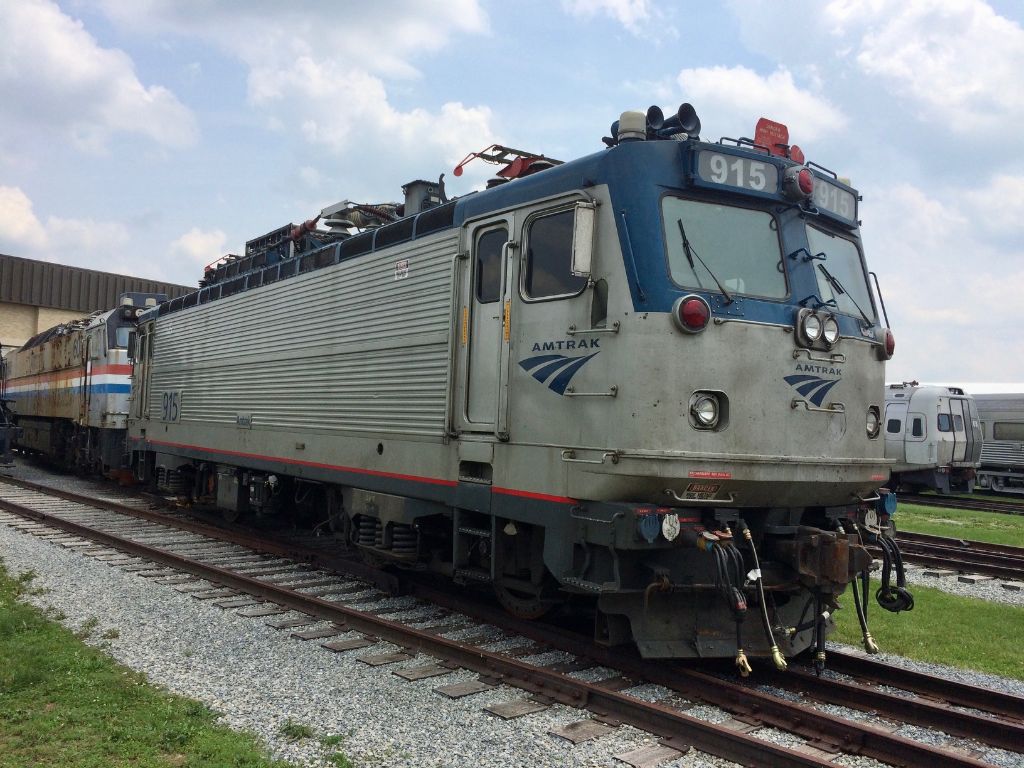
Buit: 1979 by Electro-Motive Div. of General Motors in La Grange, Il
Prior to the adoption of the AEM-7 there was little in the way of of new electric locomotives in the United States. The E60 was the newest but sadly it would not prove to be an apt replacement for the GG-1. With that reality in mind in late 1970s Amtrak turned to Europe and their long history of electric rail service for the next successor. One of the most successful examples they turned too was built by Allmanna Elektriska Aktieboag (ASEA) of Sweden and with some adaptation for the North American railroads the AEM-7 was chosen.
AEM-7s stateside were built under license by EMD at their La Grange, Il facility. AEM-7’s were adopted by other east coast railroads as well but Amtrak allotted for 54 of the 65 purchased. If there was to be a worthy successor to the GG-1 it was the AEM-7 as after around 35 years of service they were finally retired and No.915 arrived at the Museum in 2015.
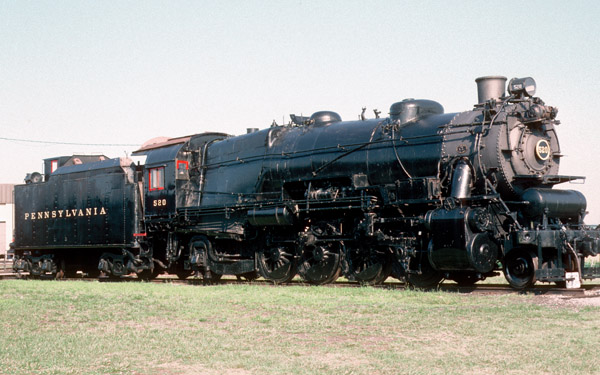
Built: 1916 by Baldwin Locomotive Works
Retired: 1957
By the turn of the century trains became longer, heavier, and schedules demanded faster transportation of goods. Thus it soon became obvious that a larger more powerful but not necessarily faster locomotive was needed. That more powerful next step was the 2-8-2 Mikado class which proved more than capable to carry on the work of the Consolidations. The L1 locomotives were not only able to haul heavy trains, but could also hustle lighter loads at speeds of 50 mph and better; a remarkable feat for a freight engine weighing in at 314,000 pounds with a hand-fired boiler. L1’s served well until the end of steam on the Pennsy and L1s No. 520 is a good example of one of the most widely adopted wheel arrangements of the 20th Century.
Fast Fact: In 1897 Baldwin made the first “Mikado” type engines for Nippon Railways in Japan and were so named for the Emperor of Japan. The name stuck until World War II when some tried calling them “MacArthur’s” instead, but the renaming was very short lived.
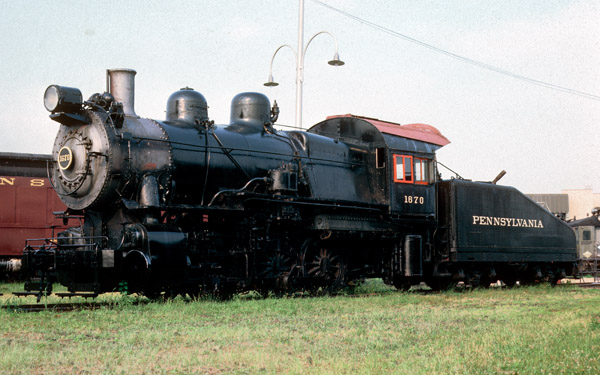
The Upgraded B6 Switcher: A Durable “Yard Goat”
Built: 1916 by Pennsylvania Railroad, Juniata Shops, Altoona, Pennsylvania
The addition of the Pennsylvania Railroad’s signature Belpaire firebox, superheaters and power reverse lever made this B6sb switcher one of the most modern, powerful, and efficient 0-6-0’s anywhere. The B6 class as a whole was the most successful of what the Pennsylvania Railroad called their “shifters.” Like most switching engines, No. 1670 led a career of little excitement, but great importance.
Scuttling back and forth, this little “yard goat” spent most of its life breaking down and making up new trains. Its sloped-back tender gave good visibility to the rear – an important feature on a locomotive that would spend half of its life in reverse.
Fun Fact: The No. 1670 is one of two surviving Pennsylvania Railroad B6 locomotives and the only B6sb.
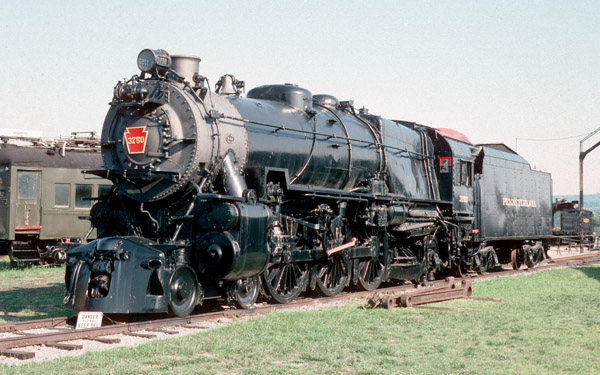
Built: 1920 by PRR Juniata Shops
Retired: 1958
When thinking about the Pennsylvania Railroad the two locomotives that generally come to mind are the GG-1’s and the K4’s. K4s locomotives are the result of the PRR searching for more powerful and efficient locomotives to be their new standard passenger power. The K4s Pacifics blended the best attributes of other successful locomotives including E-6 Atlantic and earlier Pacific locomotives. The K4s speed and power made it the standard for passenger trains and were assigned to every division and schedule on the railroad, from locals, to mail, express, and the “Blue Ribbon” fleet. The engines proved so successful they outlasted most other classes of the Pennsy’s steam power and worked alongside diesel electrics until the last days of steam.
Fast Fact: In 1987, Governor Robert Casey signed House Bill 1211 making the PRR’s K4s the official steam locomotive of the Commonwealth of Pennsylvania.
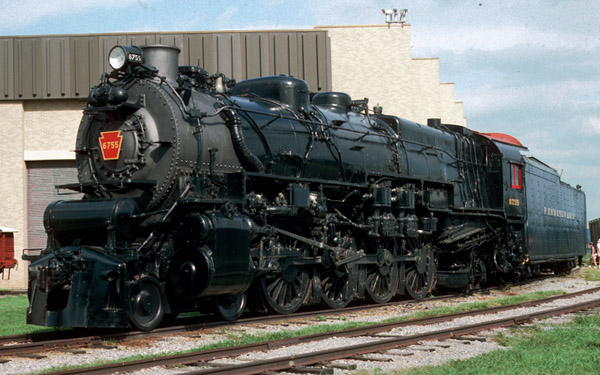
Built: 1930 by Juniata Shops at Altoona, PA
When anyone lays eyes upon the huge mass of engineering that is the M1b they are seldom surprised to find the name “Mountain” is apart of the title for this behemoth. True enough the M1b is big and it was made big to fill the role of several other locomotive types (particularly the L1 and I1) and far surpass their capabilities. M1’s were designed to be versatile so they could fill passenger and freight roles. Early on they did fill both roles but would eventually be assigned to just freight duties with their ability to accelerate tonnage quickly. As one might imagine an engine so impressive requires an equally impressive tender. To keep the M1b’s running the large tenders they used could hold 31.5 tons of coal and up to 22,090 gallons of water with a scoop to collect water on the fly.
Fast Fact: Between the overall engine/tender length of 106′ 11 3/4″ and combined weight of 384.18 tons, No.6755 is believed to be the largest surviving PRR steam locomotive.
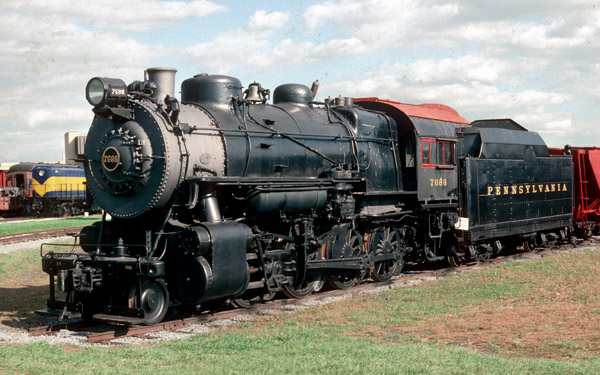
Built: 1915 by Lima Locomotive at Lima, OH
This steam locomotive, represents the culmination in development of the most numerous general type of steamer on American railroads, the “Consolidation.” The heaviest and most powerful Consolidation built for the Pennsylvania Railroad were the H10-class engines. The H10 could exert 26 tons of forward pull, which meant the newer engine could handle trains over the line more than two and a half times bigger than its predecessor. By 1924, the PRR had over 3,000 “Consolidations” in daily use, mostly classes H6 through H10, pulling freight trains everywhere on the railroad’s 13-state system. During World War II, No. 7688 was pressed into troop train service, as evidenced by added steam heat lines, train-line signal connections and large “standard”-type automatic coal stoker.
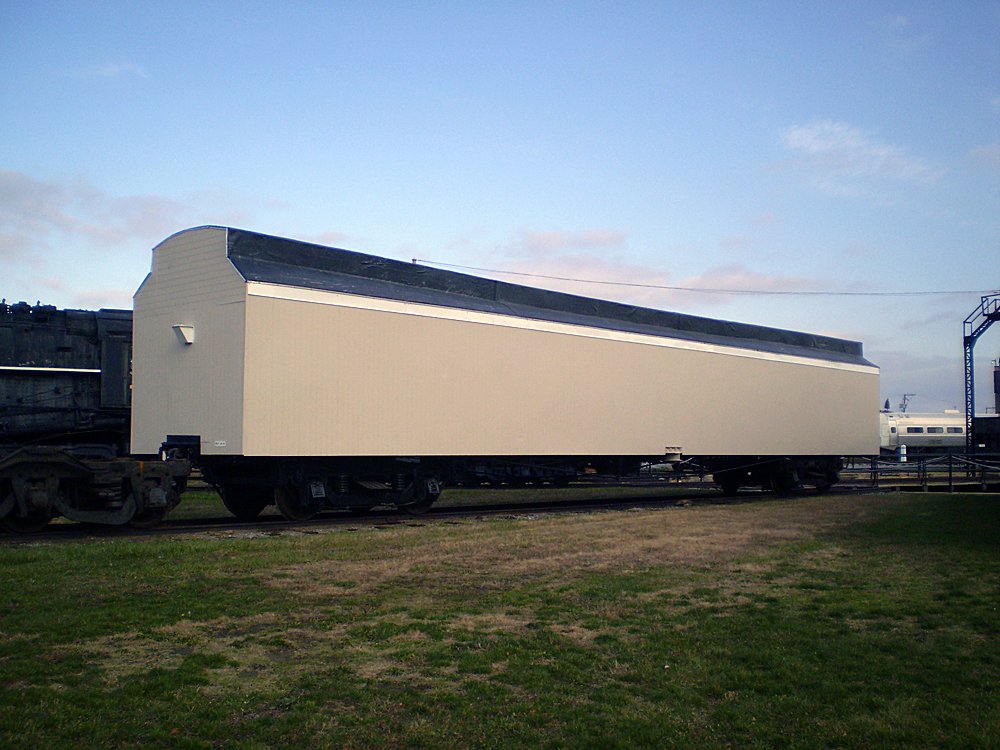
Built: 1927 by Pullman-Standard in Pullman, IL
Retired: 1961 c.
The Parlor car was a 1st class day accommodation providing a higher ambiance of seating and amenities than coach. Parlor service was generally offered on runs of about four hundred miles or less where its use was justified. Pullman Parlor Car White Diamond was built to be operated by Pullman for the Lehigh Valley in their premier passenger train the Black Diamond between Jersey City, NJ/Metro NYC and Buffalo. The Black Diamond was later moved to the PRR Pennsy Station across the Hudson in Manhattan.
Originally the White Diamond offered a solarium, or “Observation Sun Room” at the rear of the car for passengers to enjoy the views. In 1951, Sayre Shops rebuilt and refurbished White Diamond inside, and the outside was given a more streamlined appearance. The solarium was eliminated and a rear vestibule was added so the car could run in the middle of the train. With that it became a parlor/lounge car with 24 parlor seats and 12 lounge seats. After its retirement LV 1552 saw limited service on special occasions until 1970 when it made its way to the Museum. Ultimately the White Diamond serves as an important example of some of the problems Museums face everywhere. These problems can be a lack of funds, volunteers, and work space. That said it is also why all the contributions of our visitors and volunteers are so appreciated by us so that we can maintain our sizable collection.

Built: 1948 by Pullman-Standard, Pullman, IL
Retired: 1968
Tower View and her twin Mountain View were built to bring up the rear of the PRR’s premier train the Broadway Limited . Both of these cars are great examples of luxury observation cars. In their own ads the PRR described the Tower View as featuring sofas, easy chairs, refreshment buffet, lounge and other refinements. Even more than that the the Tower View boasted a double bedroom and two master bedrooms with showers, radio, and wood paneling. The Broadway was combined with the the all coach General at the end of 1967 and the Tower View was retired,
Fun fact: The Broadway with the Tower View in tow was the last all Pullman train to operate on the continent when it ceased to be exclusively Pullman at the end of 1967.

Built: 1908 by PRR Altoona Shops
PRR 1650 and 1651 were experimental prototypes built to meet the new demands for all steel fire resistant cars. This desire for all steel cars was the result of the new tunnels built under the Hudson River into NYC. The thought of an accident occurring in the long tunnels with wood cars lit by flame was a terrifying prospect; so safer more fire resistant cars were a necessity for the PRR. These prototype builds had reversible seat backs for quick change of directions, electric lighting, steam heat from the locomotive, mens and ladies restrooms, and drinking water dispensers. These cars laid the ground work for the future modern PRR coach cars and are very unique pieces to the Museum.

Equipment – Other
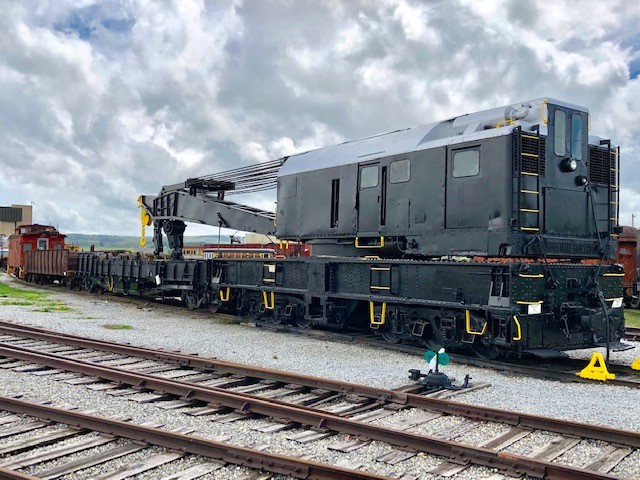
Type: 250 ton self propelled crane
Built: 1953 by Industrial Brownhoist Corp. for Erie Railway originally
Retired : 1994
Maintenance of way equipment of all sizes has played an important role in railroads since their beginning. The equipment is seldom seen working behind the scenes but helps railroads to stay open and running efficiently. One of the unfortunate things that inevitably happens in railroading is wrecks and unlike when an accident occurs on a highway there is not much of an option for trains to simply change routes. So to keep their traffic running smoothly wreck trains and their crews would be on call at all hours to clear tracks in the event of an accident.
The Museum’s Brownhoist Crane was built for the Erie Railway originally before passing to the Erie-Lackawanna and finally Conrail. The Erie Railway had 3 of these 250-ton wreck cranes and several smaller ones to keep their 2,000 plus miles of trackage open. Wreck cranes of this size were frequently used for re-railing locomotives and cars or lifting whole pieces that may have rolled onto their sides. When it came to operating these cranes it required a great deal of skill to avoid further damaging pieces and often pushing the crane to its limits. Another factor that further complicated matters was the operators were often pressed for time because in these situations time is money with tracks being closed stalling traffic on the respective railroad. Working on a wreck train was not the most glamourous work done by railroad workers but it was an absolutely necessary job that kept railroads running.
Fast Fact: The longest salvage operation worked by our crane was a wreck around East Liverpool, PA in the 1980s which took 92 hours to reopen the main line.

Open 5 Days a Week!
- Monday: Closed
- Tuesday: Closed
- Wednesday: 10:00 AM - 4:00 PM
- Thursday: 10:00 AM - 4:00 PM
- Friday: 10:00 AM - 4:00 PM
- Saturday: 10:00 AM - 4:00 PM
- Sunday: 12:00 PM - 4:00 PM
* Last Entry at 3:30 PM
Moscow Metro Underground Small-Group Tour - With Reviews & Ratings
Moscow metro underground small-group tour.
- See more images
Tour Information
Key Details
- Mobile Voucher Accepted
- Free Cancellation
- Duration: 3 Hrs
- Language: English
- Departure Time : 10:00 AM
- Departure Details : Karl Marks Monument on Revolution Square, metro stop: Square of Revolution
- Return Details : Metro Smolenskaya
- If you cancel at least 4 day(s) in advance of the scheduled departure, there is no cancellation fee.
- If you cancel within 3 day(s) of the scheduled departure, there is a 100 percent cancellation fee.
- Tours booked using discount coupon codes will be non refundable.
Go beneath the streets on this tour of the spectacular, mind-bending Moscow Metro! Be awed by architecture and spot the Propaganda , then hear soviet stories from a local in the know. Finish it all up above ground, looking up to Stalins skyscrapers, and get the inside scoop on whats gone on behind those walls.
Know More about this tour
We begin our Moscow tour beneath the city, exploring the underground palace of the Moscow Metro. From the Square of Revolution station, famous for its huge statues of soviet people (an armed soldier, a farmer with a rooster, a warrior, and more), we’ll move onto some of the most significant stations, where impressive mosaics, columns, and chandeliers will boggle your eyes! Moreover, these stations reveal a big part of soviet reality — the walls depict plenty of Propaganda , with party leaders looking down from images on the walls. Your local guide will share personal stories of his/her family from USSR times, giving you insight into Russia’s complicated past and present. Then we’re coming back up to street level, where we’ll take a break and refuel with some Russian fast food: traditional pancakes, called bliny. And then, stomachs satiated, we are ready to move forward! We’ll take the eco-friendly electric trolleybus, with a route along the Moscow Garden Ring. Used mainly by Russian babushkas(grannies) during the day, the trolleybus hits peak hours in the mornings and evenings, when many locals use it going to and from their days. Our first stop will be the Aviator’s House, one of Stalin’s Seven Sisters, followed by the Ministry of Foreign Affairs — and you’ll hear the legends of what has gone on inside the walls. Throughout your Moscow tour, you’ll learn curious facts from soviet history while seeing how Russia exists now, 25 years after the USSR.
Local English-speaking guide
Pancake snack and drink
Additional food and drinks
Tickets for public transport
Souvenirs and items of a personal nature
Tips and gratuities for the guide
Additional Info
Confirmation will be received at time of booking
Dress standard: Please wear comfortable shoes for walking. For your Urban Adventure you will be in a small group of a maximum of 12 people
Traveler Reviews
This tour exceeded our expectations. Nikolai (Nick), our tour guide, was very knowledgeable, thorough, and has a great personality. He didn't take shortcuts and really covered everything that was on the agenda in great detail. We saw beautiful metro stations and learned the history behind them, including many of the murals and designs.
We did the tour with Anna her knowledge and understanding of the History surrounding the metro brought the tour alive. Well done Anna!
This tour was amazing!
Anna was a great tour guide. She gave us heaps of interesting information, was very friendly, and very kindly showed us how to get to our next tour.
Amazing beauty and history.
An excellent tour helped by an absolutely amazing guide. Anna gave a great insight into the history of the metro helped by additional material she had prepared.
great tour and guide - thanks again
great will do it again, Miriam ke was very good as a guide she has lived here all here life so knew every interesting detail.a good day
Tiger Woods makes cut at Masters, breaks all-time record with 24 consecutive cuts

Tiger Woods during the second round of the 2024 Masters Tournament. (Ben Jared/PGA TOUR))
Change Text Size
AUGUSTA, Ga. – The second day of the 88th Masters was never going to be kind to Tiger Woods. It was an intersection of worst-case scenarios, with Woods having to play early and often in cold temperatures. It takes him hours to get his battered body ready to play golf, which meant an early wake-up call Friday morning to resume his first round at 7:50 a.m.
He had to play the final five holes of his opening round before arriving at the first tee to start his second. For a man who said earlier this week that “every shot that’s not on a tee box is a challenge,” 18 holes is more than enough. Especially on the hilliest course players face all year. Add in the cold and windy conditions that make it difficult to loosen up a body pieced together by screws and rods and fused joints, and it seemed that the factors had conspired against him this week.
But Friday also was an opportunity to make more history at a course he admires more than any other. Woods said earlier this week that he is here to win. That he teed it up because he believes another victory is still possible “if everything comes together.” Victories are what drive him, but they do not cause him to downplay the seemingly mundane act of just making the cut.
On Friday, he had the opportunity to establish another record cuts streak. He was seeking his 24th consecutive made cut in this tournament, a streak that would surpass the mark he shared with Gary Player and Fred Couples. Despite the unfavorable conditions and his physical limitations, Woods did so with relative ease, shooting 73-72 to finish well inside the line . He was T25 when he walked off the 18th green Friday afternoon. He promised that a needling text message would soon be sent to Couples to mark the occasion.
“It's consistency, it's longevity, and it's an understanding of how to play this golf course,” Woods said Tuesday of the record. "Now, you still have to go out and execute it, but there's a lot of knowledge that goes into understanding how to play (Augusta National). …That's the neat thing about this. I can still go through the mental Rolodex and bring out a few putts from the '90s that still move generally in that direction and the effect that Rae's Creek has on certain shots and putts. And it means a lot.”
Woods’ affection for Augusta National comes not just from the genius of Alister MacKenzie’s design, which allows him to fully utilize his creativity and shot-making skills, but also because of the course’s annual accumulation of history. This is the same place where he played his first major championship, competing in 1995 as the reigning U.S. Amateur champion. He watched from the Crow’s Nest as Gene Sarazen, Byron Nelson and Sam Snead hit the ceremonial tee shots. Three years later, he marveled at the fact that those three were drinking the milkshakes he had on his Champion’s Dinner menu.
“There's such an aura and mystique about playing this golf course,” he said.
He played practice rounds with Arnold Palmer and Jack Nicklaus in his first Masters, and has been playing here long enough to see the likes of Jordan Spieth and Scottie Scheffler put on the green jacket. Augusta National spans generations. Woods missed the cut in his second Masters, so this record-setting streak started with his 12-shot victory here in 1997. He has won here five times but also played through swing changes and injury and personal scandal. No matter what, he has always found a way to make the cut. For two dozen years in a row.
Tiger Woods’ 1997 victory at the Masters | 25 years later
Woods tied the record last year by slogging through torrential rains and temperatures in the 40s as he completed his suspended second round early on a Saturday morning. Woods, who would need ankle surgery weeks later, was seen limping up the hill on the par-4 17th as he finished his round.
This year, he arrived at Augusta National with just 24 holes of competitive golf under his belt.
Though he said late last year that he hoped to compete once a month in 2024, Woods only appeared at The Genesis Invitational before this week. Six holes into his second round at Riviera, he had to withdraw with the flu . His body didn’t allow him to make another start before Augusta, he said.
“Some days I just feel really good,” he said, “and other days, not so much.”
Athletes reflect on Tiger Woods’ 2019 Masters victory
His mind, and his hands, are still world class. The question each time he tees it off is whether his body will allow him to use them to their full capabilities. Woods plays the role of wily veteran these days. No longer overpowering courses with his length, he hits a sliding fade off the tee to keep his ball in play and uses a crafty short game to stay around par. He made the cut easily despite hitting less than half his greens (17 of 36).
"His short game was so good. I don't think I can explain how good some of the chip shots he hit today were," said Max Homa, who played alongside Woods. "He's special.
"We had a really quick turnaround, and if I was feeling tired and awful. I imagine he was feeling even worse," Homa added. "All the cliches you hear about him and all the old stories about how he will grind it out, it was fun to see that in person."
Woods was 1-under par when play was suspended Thursday evening . He made two bogeys on the five holes he played Friday morning, signing for a 1-over 73. He started the second round with pars on his first two holes before playing a six-hole stretch without a single par. He made birdie on the third hole, hitting a 91-yard wedge shot to 9 feet before bogeys on Nos. 4 and 5, two of the course’s most difficult holes. Then he chipped in on the par-3 sixth. He made another bogey after finding a greenside bunker on the par-4 seventh and rebounded with birdie at the par-5 eighth. Five consecutive pars followed before a bogey at the 14th hole. But he reached the green in two to birdie the par-5 15th before closing with three consecutive pars.
“I'm here,” he said. “I have a chance to win the golf tournament.”
That wouldn’t be possible without making the cut. Add another record to Woods’ remarkable Masters career.
Sean Martin is a senior editor for the PGA TOUR. He is a 2004 graduate of Cal Poly-San Luis Obispo. Attending a small school gave him a heart for the underdog, which is why he enjoys telling stories of golf's lesser-known players. Follow Sean Martin on Twitter .

IMAGES
VIDEO
COMMENTS
About: Welcome! If this is your first visit I appreciate you stopping by. AltoonaWorks.info was created to document the work of the Juniata Shops, as well as railroading in Altoona, PA in general. On this web site you'll find lists of all steam, electric, gas, and diesel locomotives built in Altoona, as well as lists of "Juniata Rebuilds ...
Located in the rugged and scenic mountains of central Pennsylvania, Juniata's 110-acre main campus is situated in the town of Huntingdon and is accessible from many different modes of transportation. We are only 1.5 hours from Harrisburg, 2.5 hours from Pittsburgh, and only 3.5 hours from Baltimore, Philadelphia, and D.C. Learn More.
A tour of Norfolk Southern's Locomotive shops in Altoona, PA (Juniata Locomotive Shops) during 'Family Day', Memorial Day 2014.Watch part 2 here..... https...
Altoona Works (also known as Altoona Terminal) is a large railroad industrial complex in Altoona, Pennsylvania. It was built between 1850 and 1925 by the Pennsylvania Railroad (PRR), to supply the railroad with locomotives, railroad cars and related equipment. For many years, it was the largest railroad shop complex in the world.
The Juniata Shops were scheduled to produce 150 locomotives annually, and produced over 100,000 wheels and other running gear in the foundry. Perhaps the most important facility within the shops was the testing facility. This facility led the nation's railroad industry with their advanced research and engineering practices. Additionally, the ...
Located in Altoona, PA, just a few miles east of Horseshoe Curve, Norfolk Southern's Juniata Locomotive Shop is the largest locomotive repair facility in Nor...
Take a look behind the scenes with this 360-degree view of the 27 bays at the Juniata Locomotive Shop, where we overhaul and refurbish gigantic and complex l...
Norfolk Southern Juniata Locomotive Shop - Photo Tour. On Labor Day 2016 (September 5th), NS held an Employee Appreciation Day. event for shop workers and family members at the NS Juniata Locomotive Shop. in Altoona, PA. Some of the shop buildings were open for touring and some. NS equipment was also on display.
10/2021 - This October view of the Juniata Shops shows a wide range of locomotives surrounding the turntable. One of the most storied railroad shops in the country, the Juniata Locomotive Shop stands tall above the rest. Despite downsizing and modernization, the shop helps support the rail industry by repairing and rebuilding locomotives and ...
Locomotives galore sit outside the Norfolk Southern Juniata Locomotive Shops in downtown Altoona, Pennsylvania in this birds-eye view on November 3rd, 2021. ... The shops are just part of the large complex called Altoona Works, or Altoona Terminal. According to Wikipedia: Altoona Works (also known as Altoona Terminal) is a large railroad ...
Norfolk Southern's Juniata Locomotive shop can rebuild an entire locomotive in six and one half days flat! Located in Altoona, Pennsylvania, the Norfolk Southern's Juniata Locomotive shop is one of the busiest and oldest repair shops in the world!. It sits on 30 acres and can repair and service up to 1200 locomotives per year.. Out of Norfolk Southern's 3800 locomotives, the shop usually ...
CR 5271 Altoona, PA 3-27-1978. Juniata Locomotive Shops ALCO RS2 and RS3 Demolition and Scrapping. 1. 2. 3. Next ›. Last ». This gallery features photos in and around the Conrail Juniata shops, the railroads main locomotive repair facility. While operated by the PRR, it was once the largest locomotive shop in the world.
Answer: Norfolk Southern's Juniata Locomotive Shop back in 2012! With the Conrail SD50 to SD40E rebuild program still in full swing, blue pieces and parts from legacy Conrail locomotives were scattered everywhere across Altoona's backshops. Taken on September 7, 2012, an engine hood section from NS 5415 (formerly CR 6724) rests on a cart out ...
Norfolk Southern Juniata Locomotive Shop - Photo Tour Photos taken at Employee Appreciation Day event 09/05/2016 Photo Page 1 - Miscellaneous photos taken at the NS Juniata Shops . Signs outside the General Office Building at the NS Juniata Shops . HO Scale model of the NS Juniata Shops complex located in the General Office Building ...
Click Here for Virtual Tours of the ... Built: 1911 by PRR Juniata Shops & Westinghouse Elec. Retired: 1968. 1910 ushered in an era of great expansion on the PRR with one of their largest projects being the opening of Pennsylvania Station on Manhattan Island. Tunnels were dug under the Hudson and East Rivers to connect the station to PRR mainlines.
The Juniata shops contained erecting shops, machine shops, boiler shop, blacksmith shop, air-brake shop, and heat treating department. ... and the National Railway Historical Society sponsored a tour of the Juniata shops. A special train left from Pennsylvania Station in New York City on Sunday, May 16, 1937, making stops at Newark, North ...
And yet there was Homa, playing alongside Tiger Woods (73) and Jason Day (75), making birdies on 16 and 17 in the resumption of his first round to reach 6-under par, tied with the world No. 1 ...
Max Homa heads into the weekend at the 88th Masters firmly in contention at 6-under par. (Ben Jared/PGA TOUR) In light of lackluster record, resolved to stop trying so hard A
Augusta National is primed and ready for the 2024 Masters Tournament after a fabulous finish to the Augusta National Women's Amateur and the wonderful Drive, Chip & Putt National Final.
Pottstown & Reading Chapter, NRHS - tour of Juniata Shops, Altoona, PA.
Insert "Taste of the Masters," a food and beverage initiative spearheaded by Augusta National in 2020 when the tournament took place at a non-traditional time, in November, with no patrons on-site ...
Tours booked using discount coupon codes will be non refundable. Overview. Go beneath the streets on this tour of the spectacular, mind-bending Moscow Metro! Be awed by architecture and spot the Propaganda, then hear soviet stories from a local in the know. Finish it all up above ground, looking up to Stalins skyscrapers, and get the inside ...
Juniata locomotive shop can refurbish a locomotive in just 6 days. Content by Norfolk Southern.
Private Sightseeing Tours in Moscow: Check out 6 reviews and photos of Viator's Private Moscow Metro Tour
Moscow has some of the most well-decorated metro stations in the world but visitors don't always know which are the best to see. This guided tour takes you to the city's most opulent stations, decorated in styles ranging from neoclassicism to art deco and featuring chandeliers and frescoes, and also provides a history of (and guidance on how to use) the Moscow metro system.
Jordan Spieth made a 9 at the par-5 15th in the first round of the Masters Tournament, matching his highest single-hole score on TOUR, en route to missing the cut by three strokes. That was a ...
Private and Luxury in Moscow: Check out 17 reviews and photos of Viator's Private Guided Moscow Underground Palaces Metro Tour
The 88th Masters Tournament continues Saturday from Augusta National. Max Homa, Bryson DeChambeau and Scottie Scheffler are tied atop the leaderboard at 6-under par at the halfway mark of the 88th ...
Sean Martin is a senior editor for the PGA TOUR. He is a 2004 graduate of Cal Poly-San Luis Obispo. Attending a small school gave him a heart for the underdog, which is why he enjoys telling ...